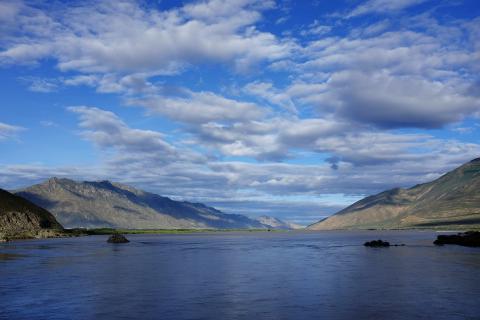
DAY4 Green smile
Get up early and cross the Tsetang Yarlung Zangbo River Bridge and drive more than 60 kilometers along the north bank to Samye Monastery. When you walk to the middle of the bridge, you can see that there are no armed police guarding the other side. I risk stopping on the bridge to take pictures.
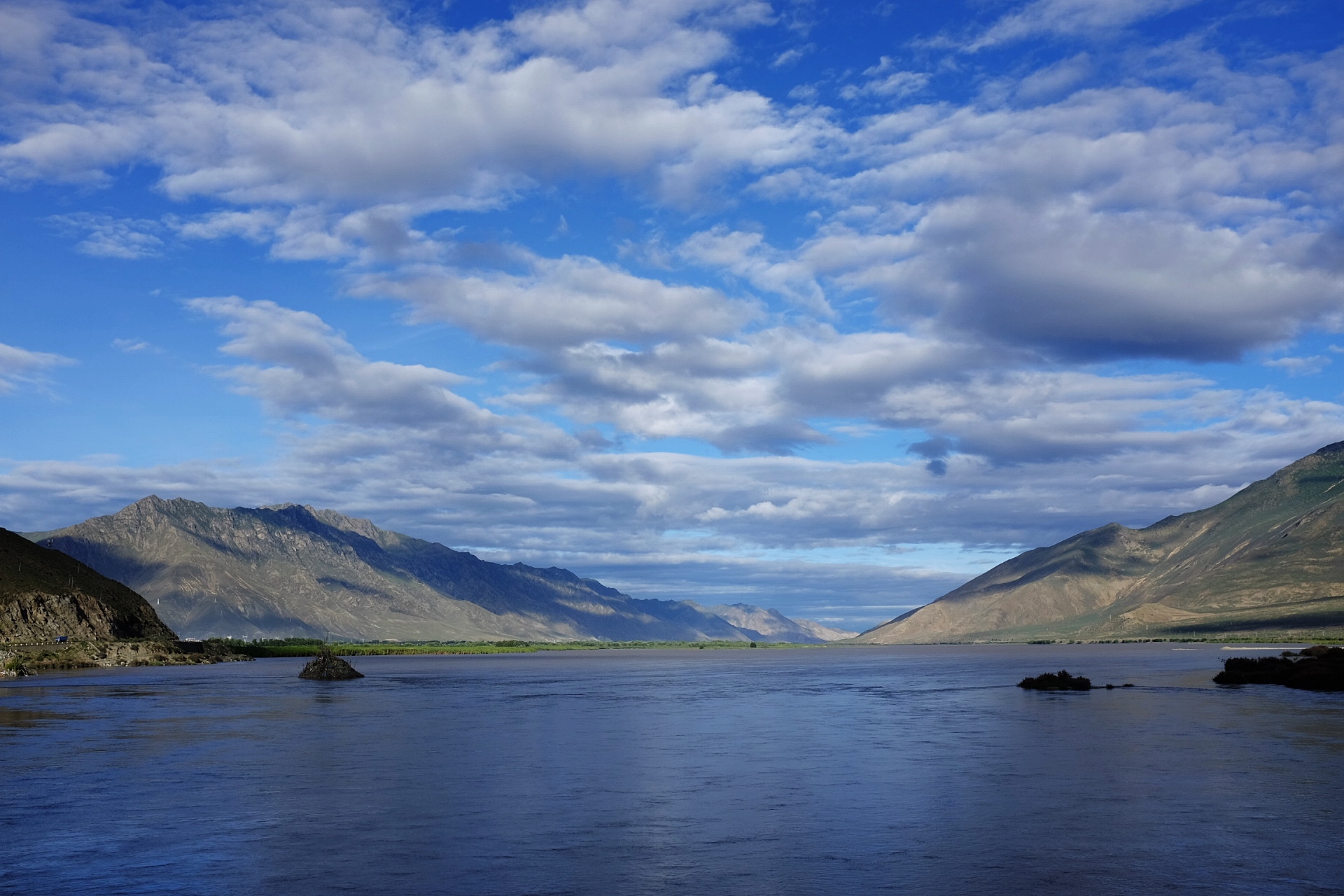
When you encounter sheep grazing on the road, you stop the car and wait for them to pass slowly. This is their paradise.
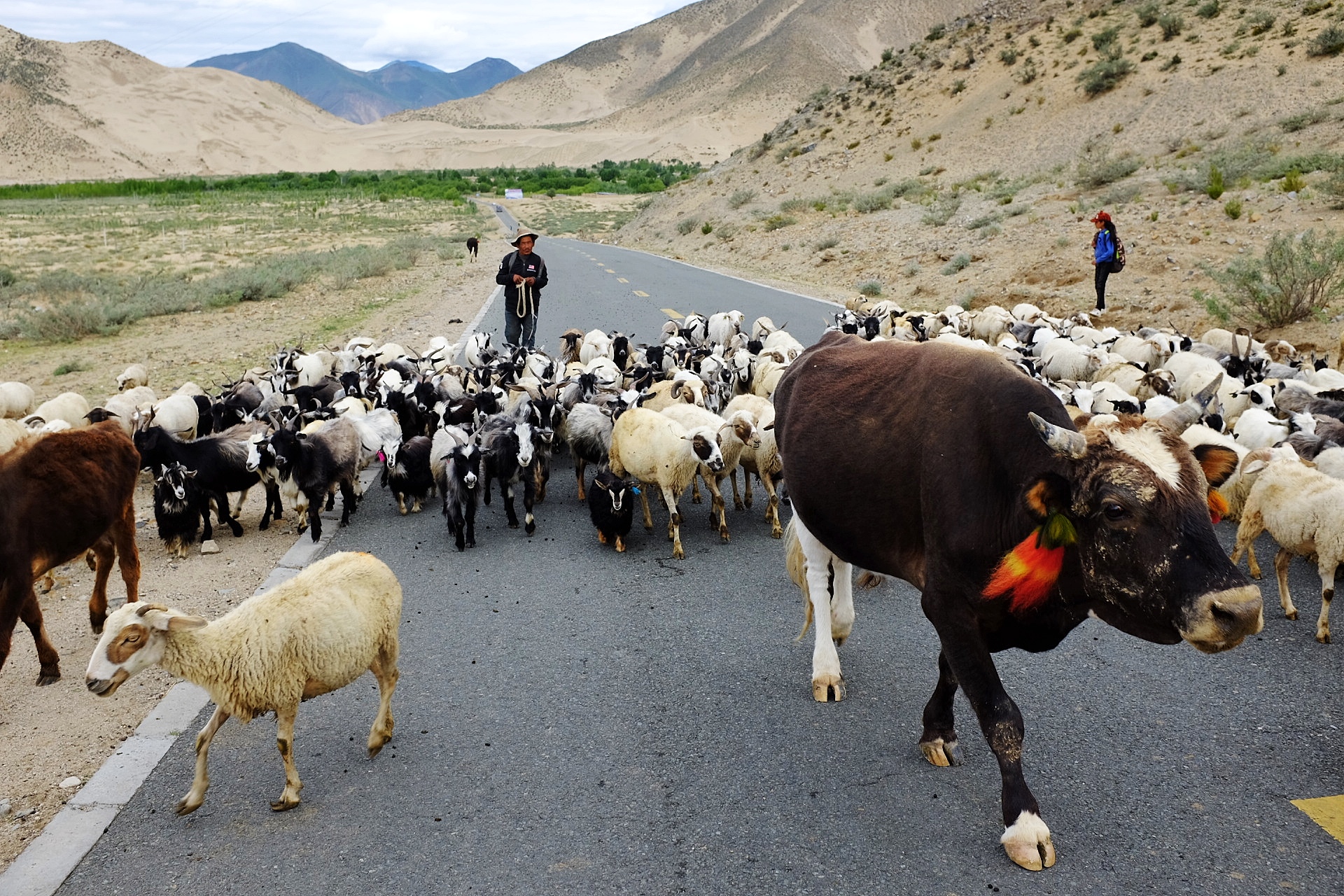
The road conditions from Zedang to Samye Town were not bad, and we arrived at Samye Monastery about an hour later. Tibetans had plastic flowers on their motorcycles. They were rough and tough but also gentle.
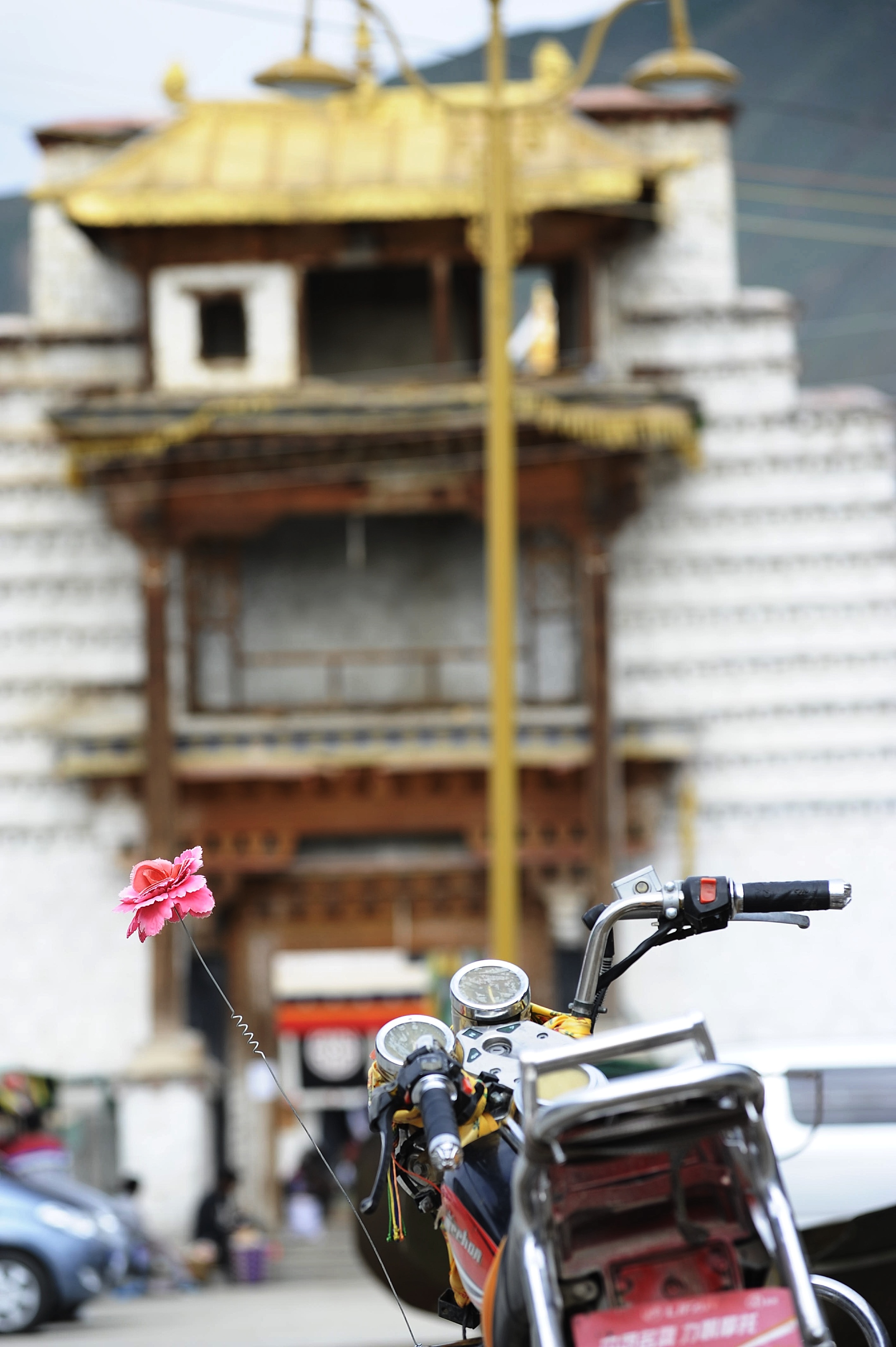
Outside the main hall of Samye Temple, a group of Tibetan dogs took a fancy to the fried potatoes in the hands of a female tourist. Surprisingly, she did not scream or throw away the potatoes in her hand, but calmly asked the Tibetan dogs to sit down obediently. You have to follow the rules when it comes to eating.
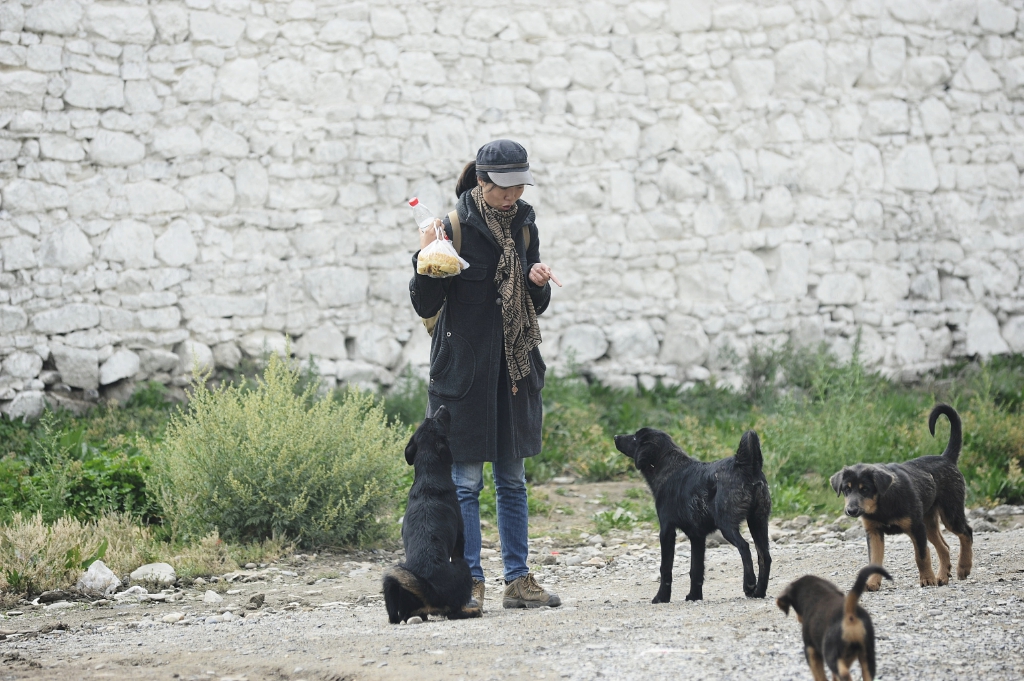
Samye Temple, also known as Cunxiang Temple and Wubian Temple, is located in Samye Town, Zhanang County, Shannan Prefecture, Tibet, at the foot of Habu Mountain on the north bank of the Brahmaputra River. It was built in the 8th century AD during the Tubo Dynasty and was the first monastery in Tibet to ordain monks. The buildings in the temple are laid out according to the Buddhist cosmology, and the central Buddhist hall has three styles: Tibetan, Han, and Indian. Therefore, Samye Temple is also called the Three Kinds Temple. The construction of Samye Temple began in 762 AD. The temple is located near the birthplace of Tibetan King Chisong Detsen and near the winter palace of Tibetan King Tride Zutsen. Master Padmasambhava presided over the construction of Samye. The building still maintains the original design of Master Shantarakshita, and Chisong Detsen personally presided over the foundation laying. Samye Temple is at least several decades later than the Dalhang and Ramoche Temples, so why is it called the first temple in Tibet? This is because the so-called temple refers to a Buddhist place where the three treasures of Buddha, Dharma, and Sangha are present. The places built before this to worship Buddha statues did not have monks in the full sense; after the completion of Samye Temple, the nobles who were ordained by Master Shantarakshita himself " "Seven Enlightenment Masters" were the first batch of monks in Tibetan history.
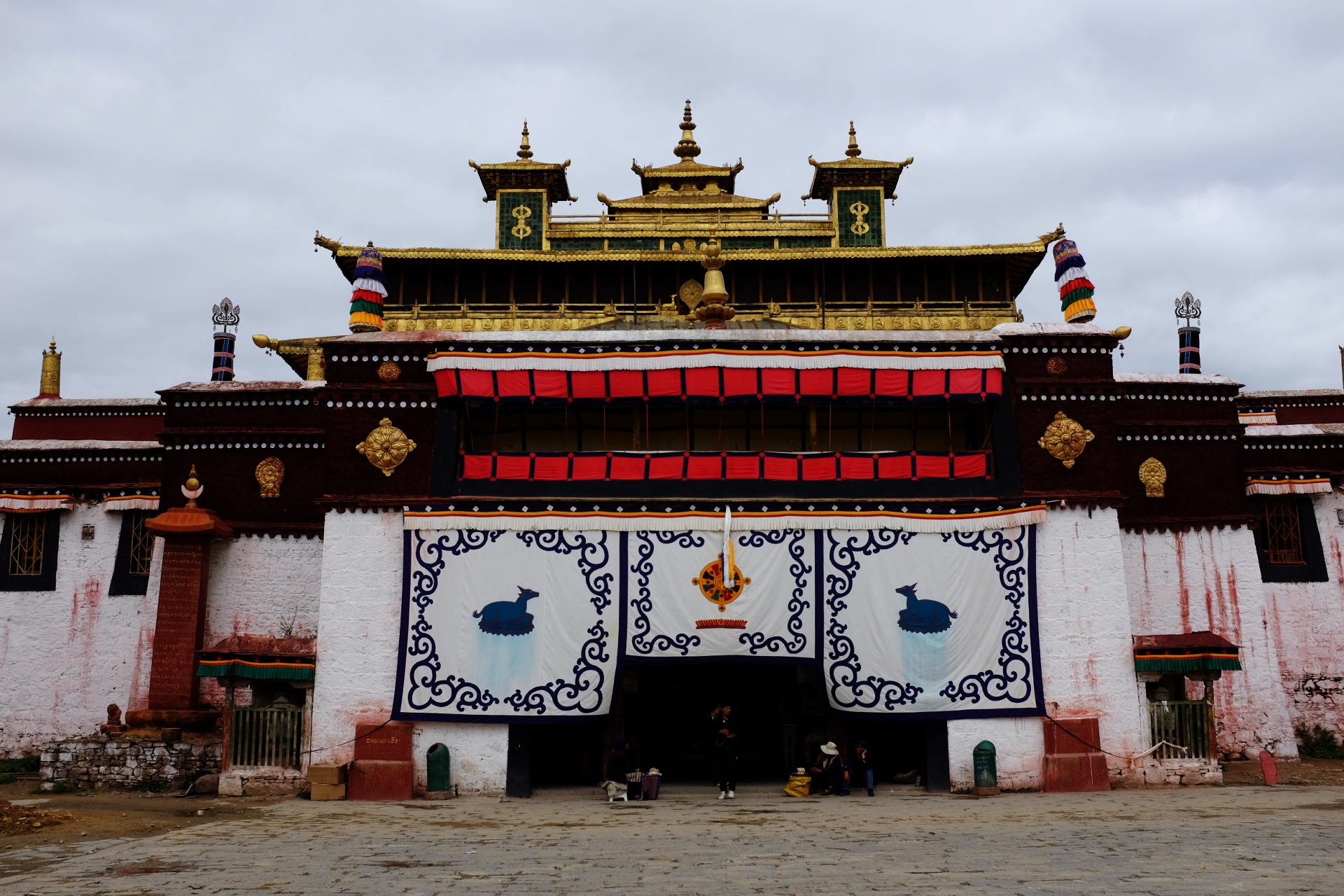
Entering the main hall, the monks were chanting sutras and performing rituals. I couldn't help but take a blind photo with the X100S hanging on my chest.
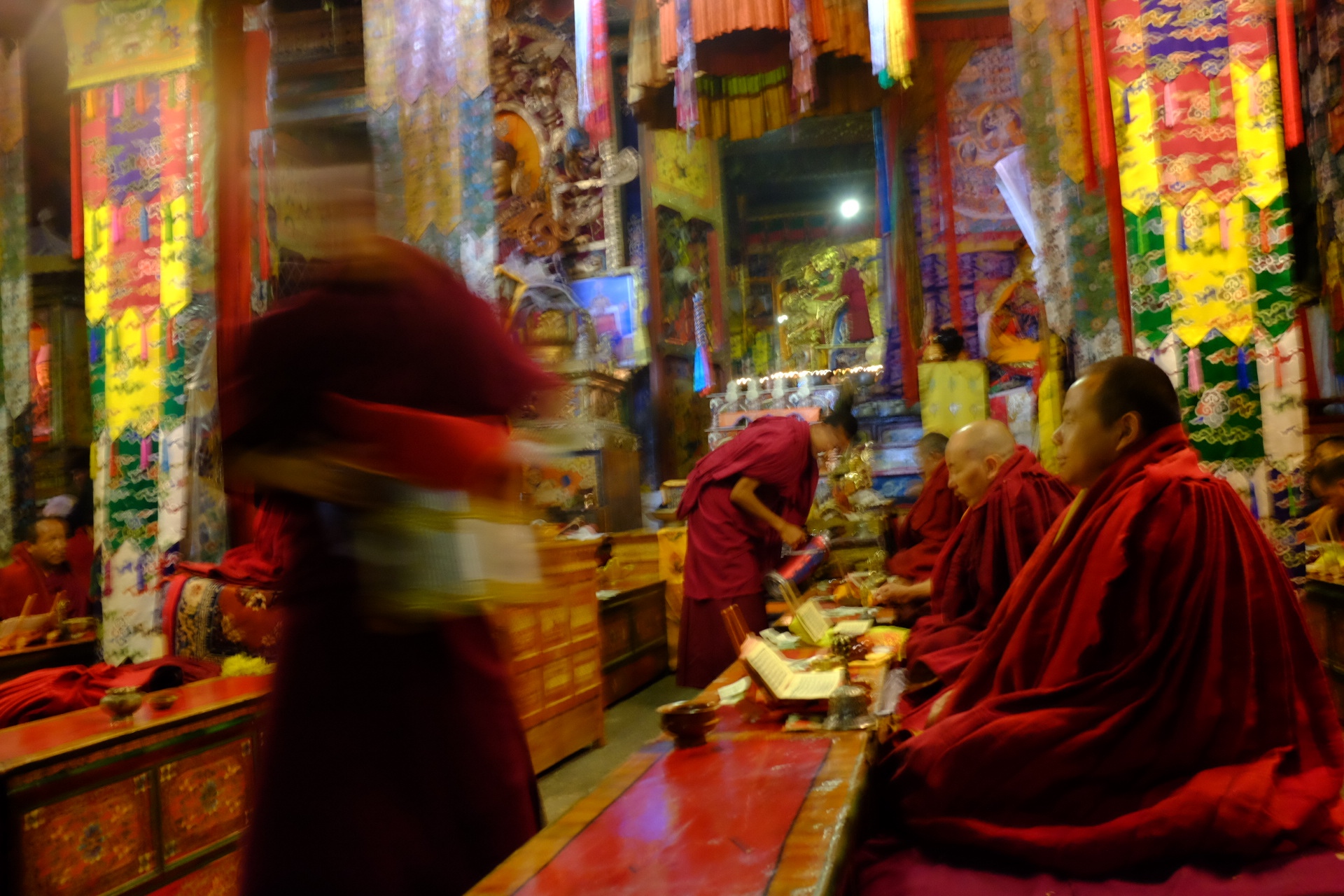
The prayer path outside the main hall is a time and space tunnel of past lives, present lives and next lives.
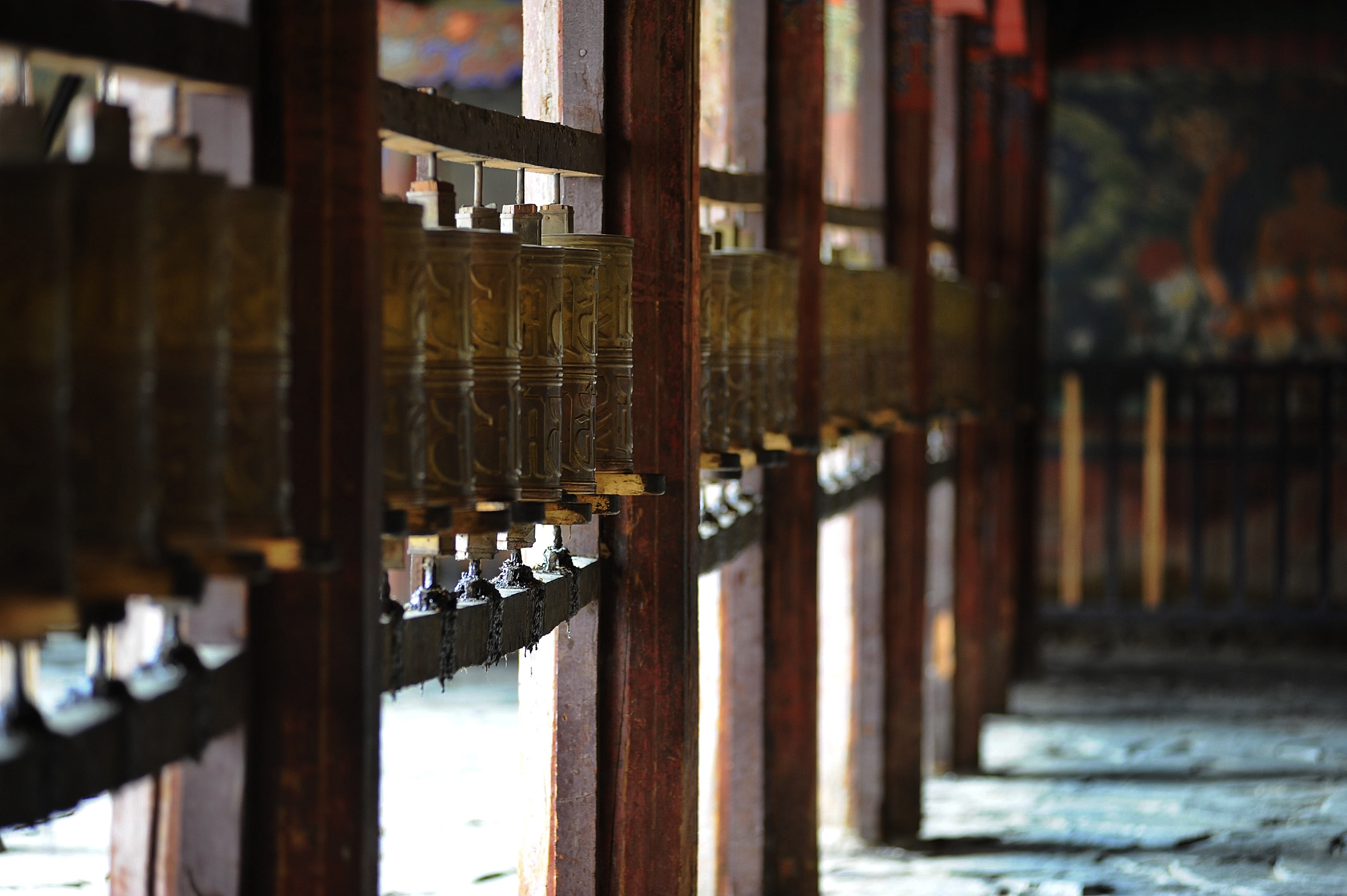
Until a herdsman came along the prayer path, the camera and I didn't exist at all to her.
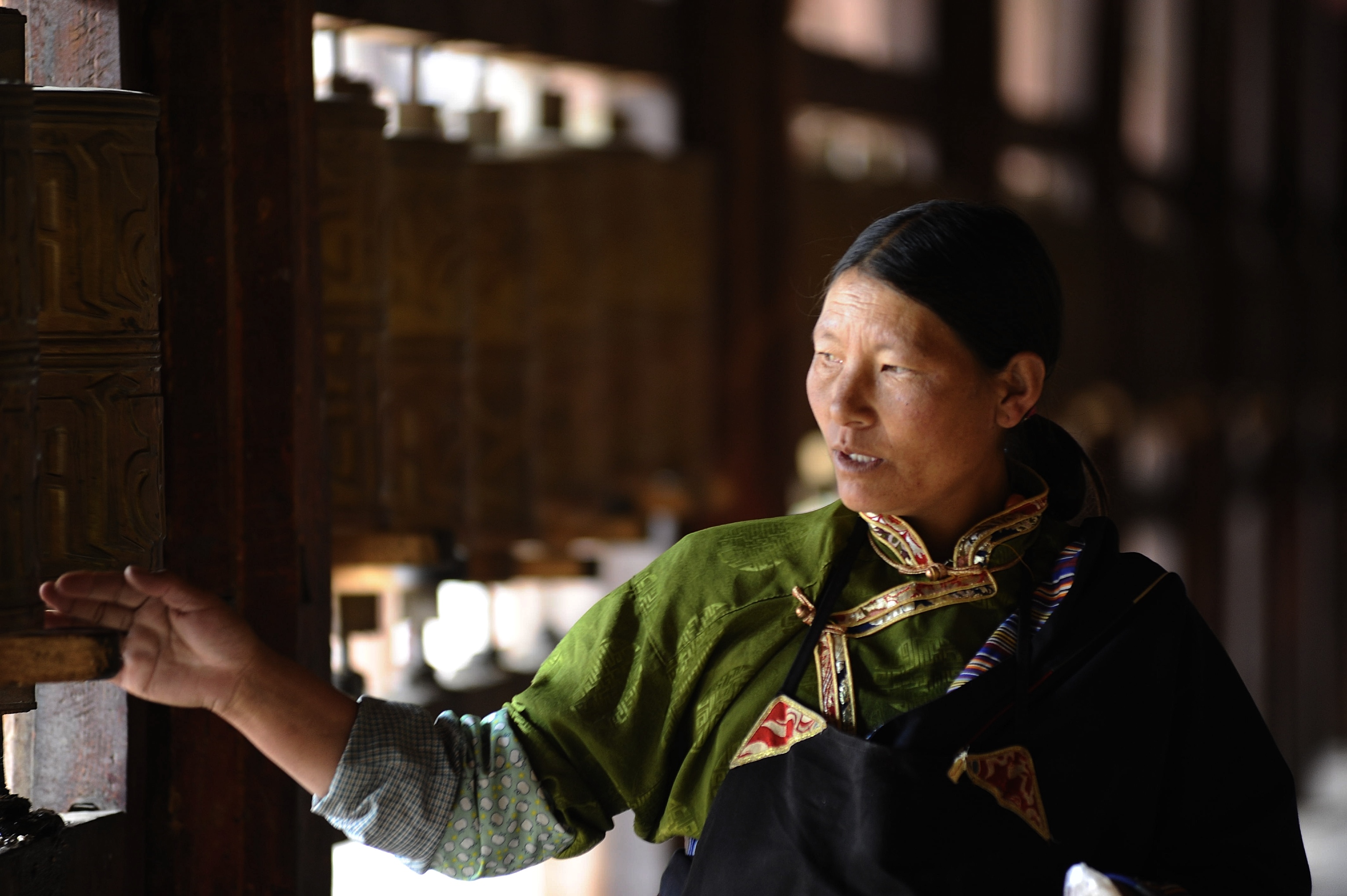
The daughter prayed with the herdsmen, wishing her good luck in this life and the next.
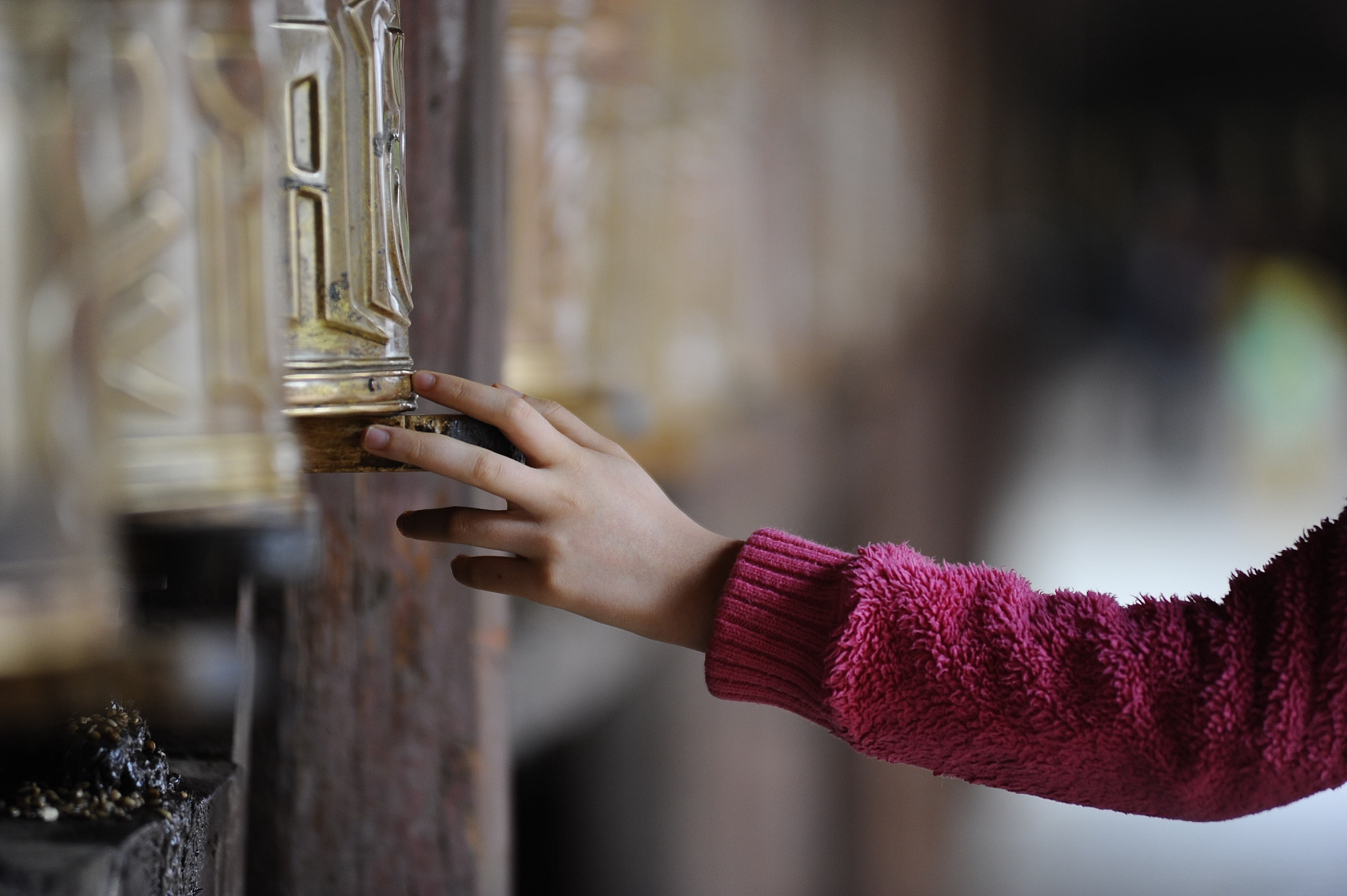
A monk opened the door and came out of the hall, pressing the shutter almost instinctively, too fast and suddenly.
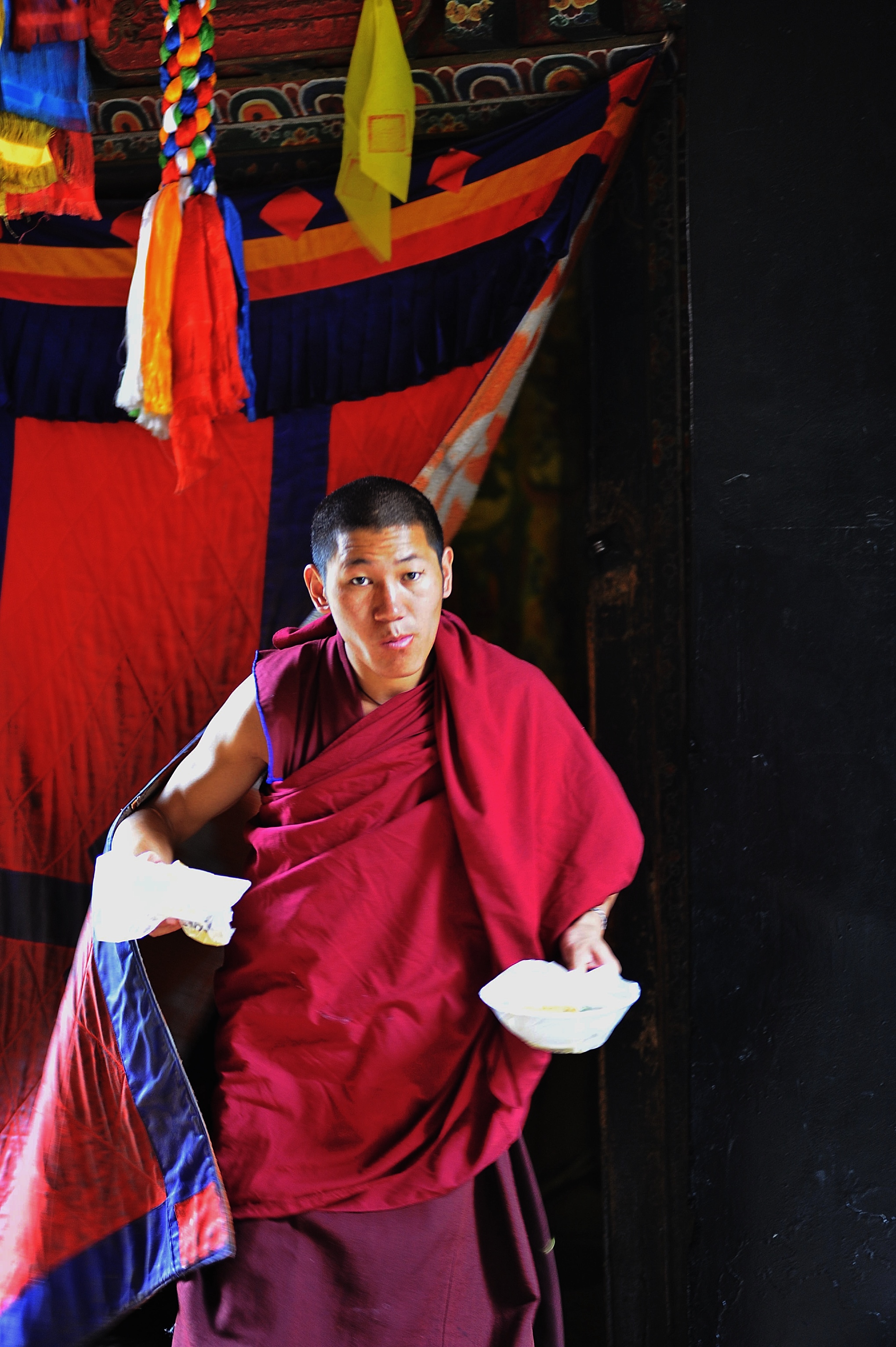
There are many such flowers in Tibetan temples. I don’t know their names. Is it another kind of Kelsang flower?
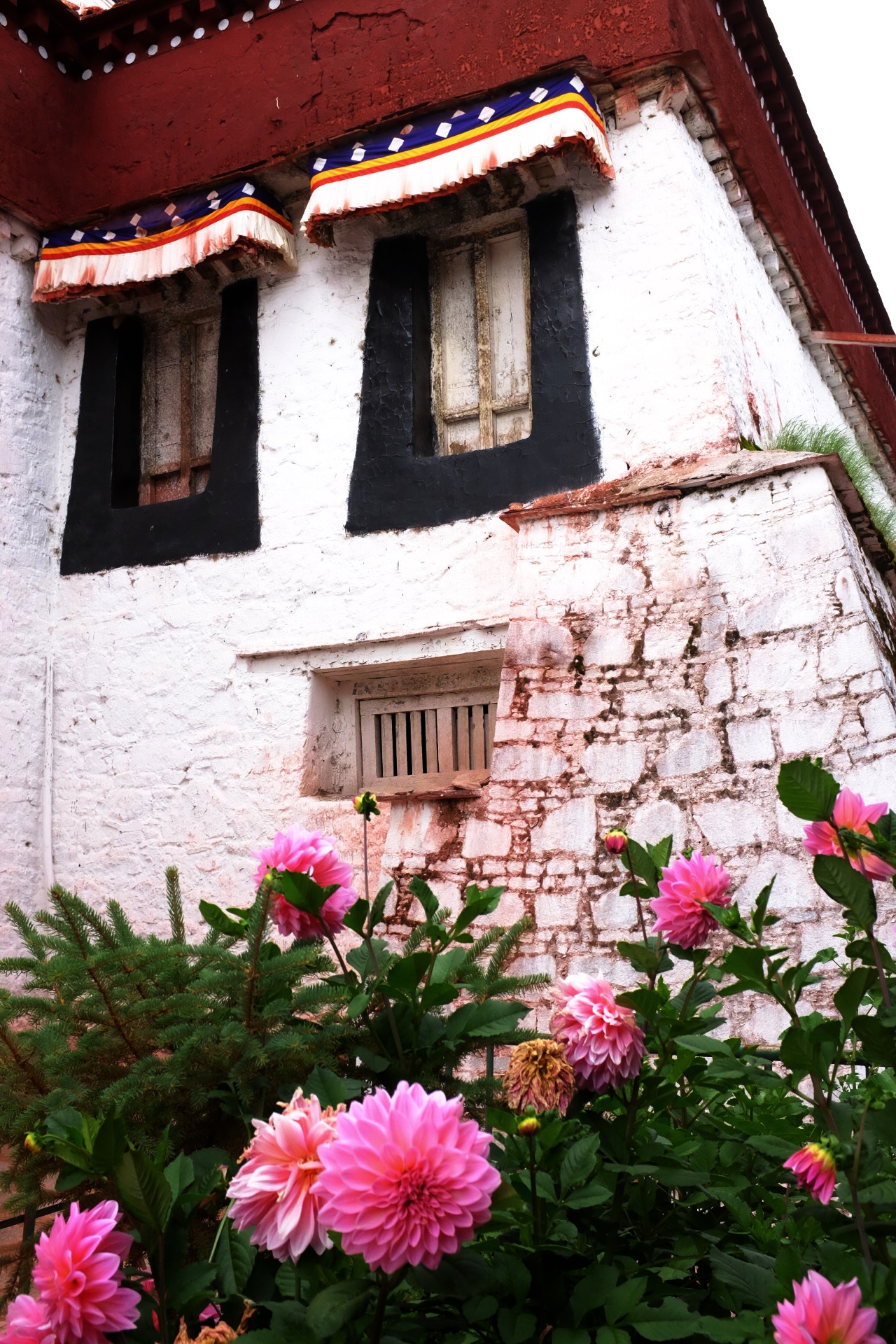
The rotating prayer tube emits a squeaking sound unique to Tibetan temples, as if it is telling the Buddha its mortal prayers.
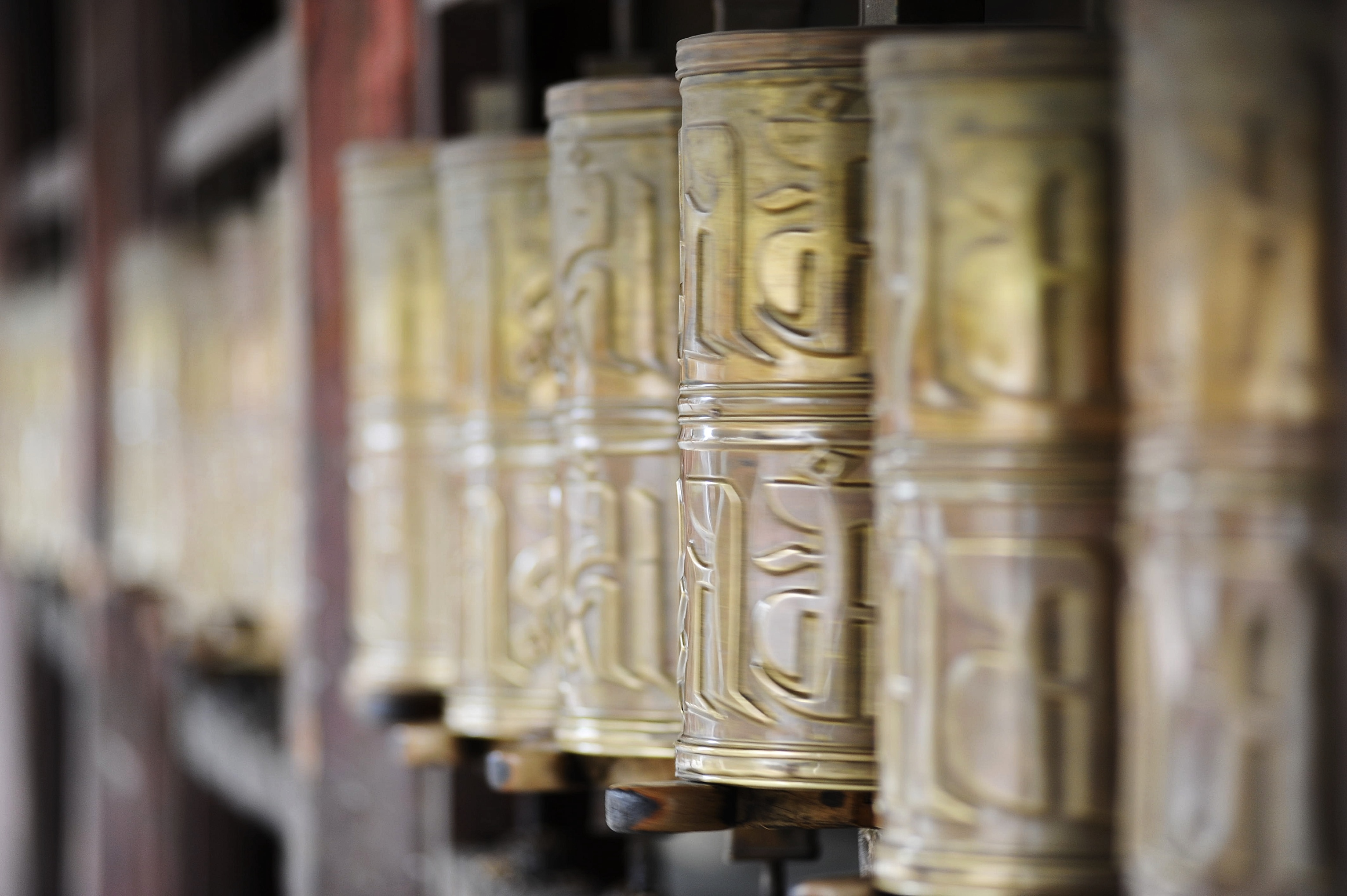
The sky outside the main hall is filled with mulberry smoke.
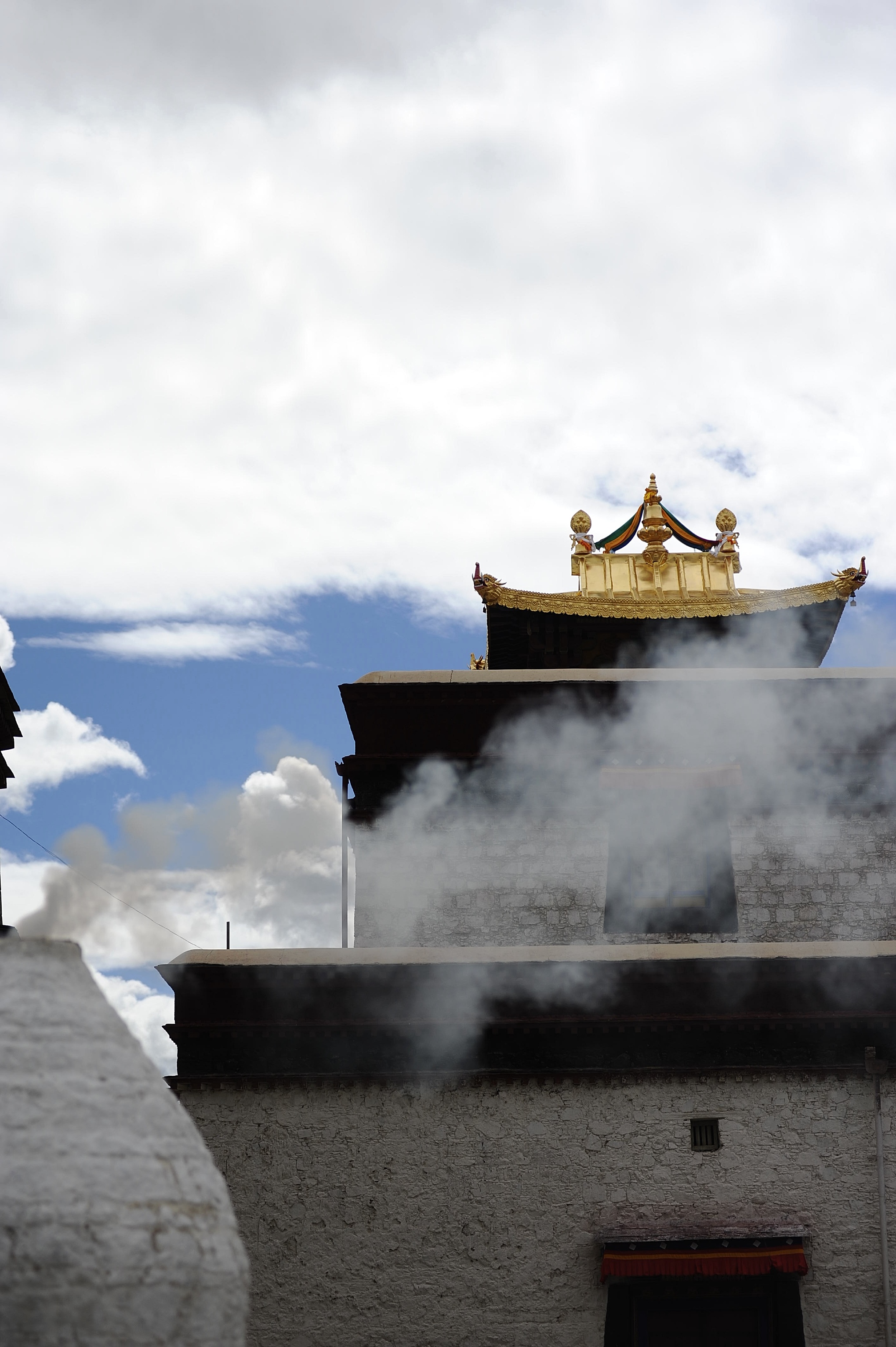
The old man resting is so harmonious with the ancient temple walls.
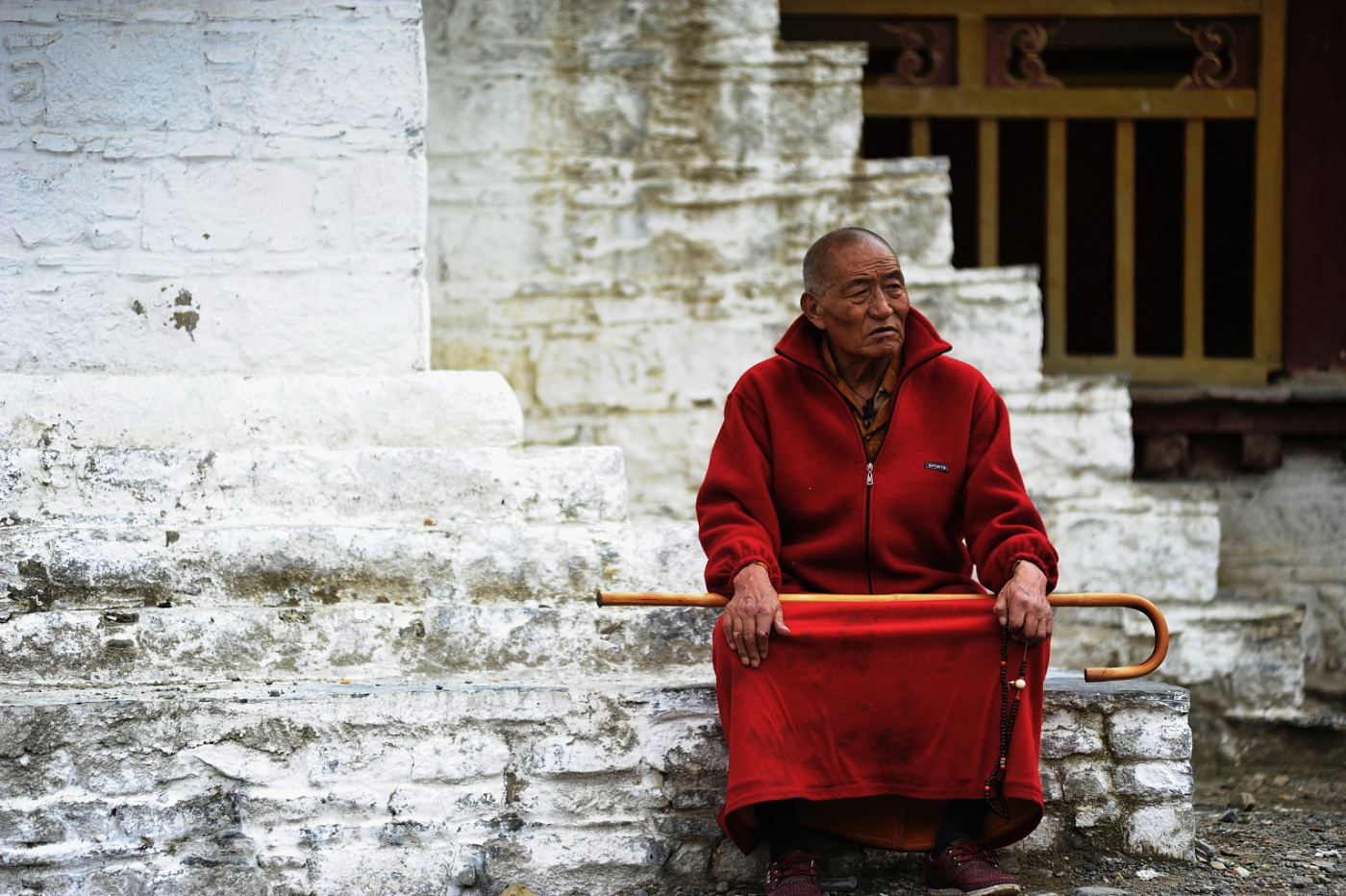
They still understand the rhythm here best.
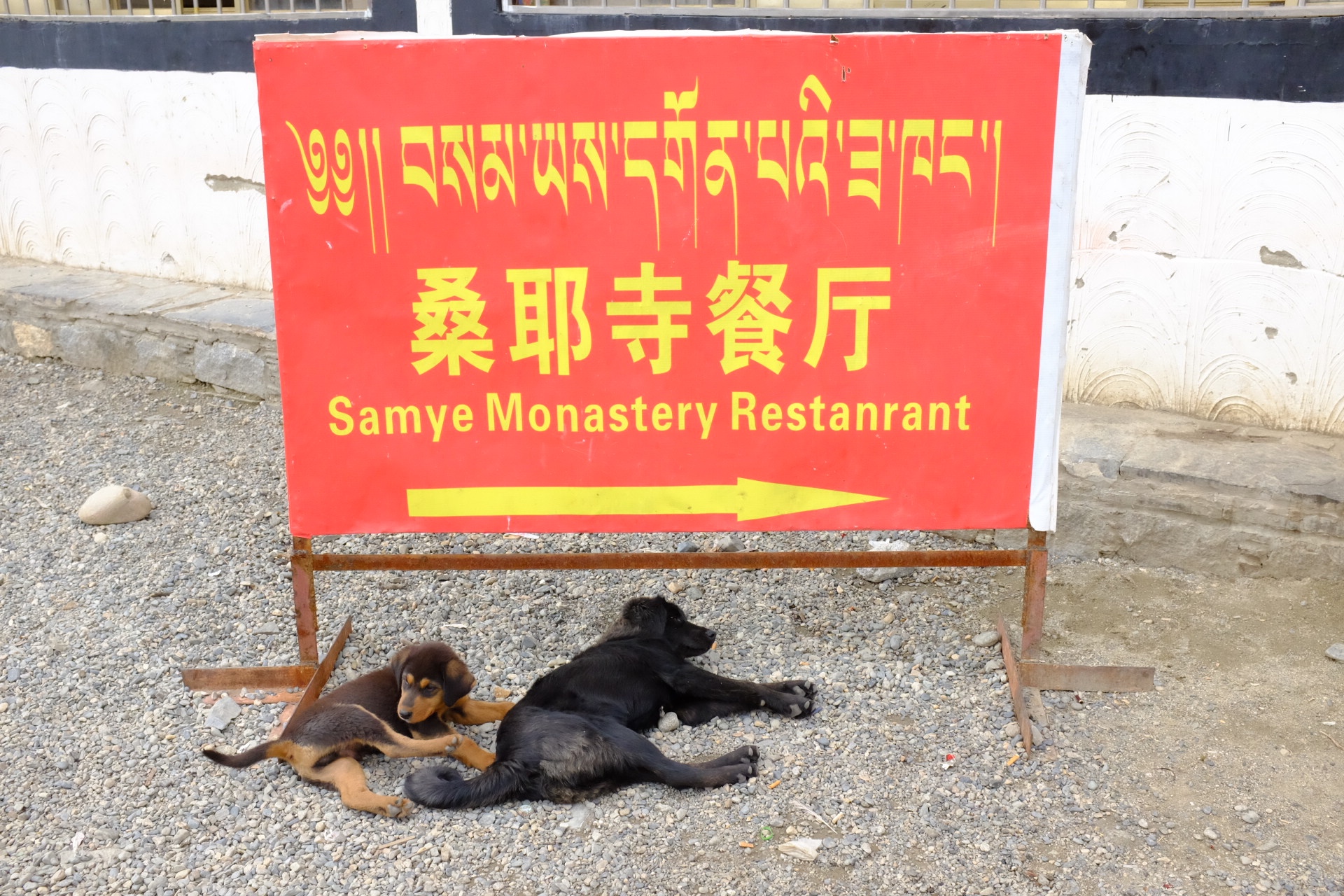
I drank a pot of sweet tea in the restaurant of Samye Temple and drove to the Qingpu Ashram on the mountain. In the past, this 12-kilometer mountain road was very difficult to walk. You had to take a villager's tractor in Samye Town to go up. Now it has been paved with asphalt roads, and the car can You can easily drive to the entrance of the ashram.
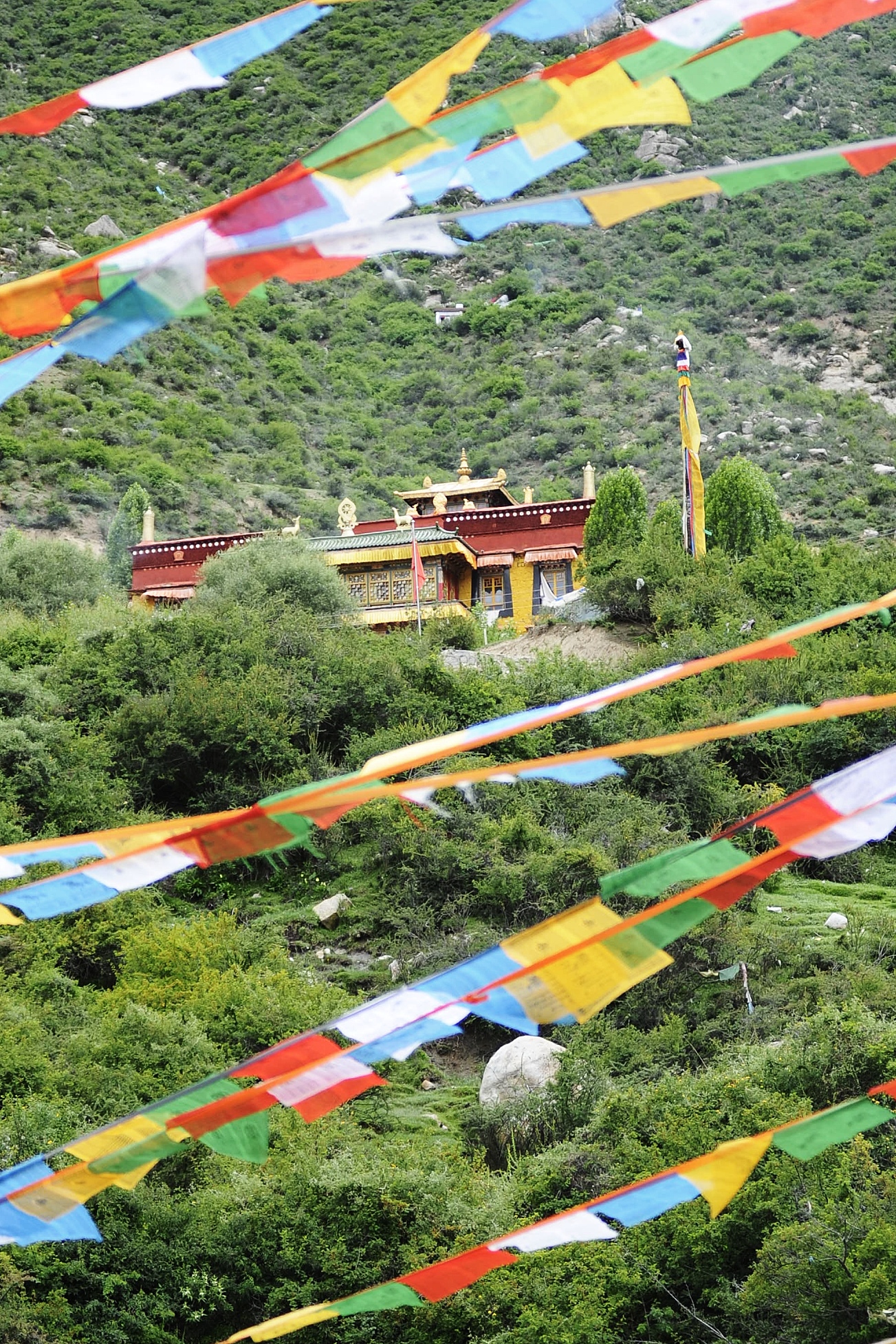
The Qingpu monastery is surrounded by mountains on three sides. The opening in the south of the valley faces the broad valley of the Brahmaputra River. The scenery is very impressive. Because it is located deep in the mountains, with gurgling streams and dense vegetation, the green and simple practice area has no severe cold in winter and no scorching heat in summer. The climate is mild all year round. It is a place with good scenery and climate. This is probably the reason why many eminent monks and ordinary people have enjoyed it throughout the ages. This is the reason why this place is regarded as a holy place for self-cultivation and enlightenment. Eminent monks such as Shantarakshita and Padmasambhava practiced here one after another, leaving behind many holy relics. At the end of the early expansion period of Tibetan Buddhism, many scriptures were buried here. In the early stage of the later expansion period, many excavators excavated here. Therefore, Qingpu and Samye Temple are both famous. Tibetans believe that if you go to Samye Temple without going to Qingpu, it means you have not arrived at Samye. According to legend, there were 108 cultivation caves, 108 celestial burial platforms and 108 sacred springs in the mountains where Qingpu practice. There are still many ascetics who come from far away to practice at Qingpu monastery, which is the size of a small village.
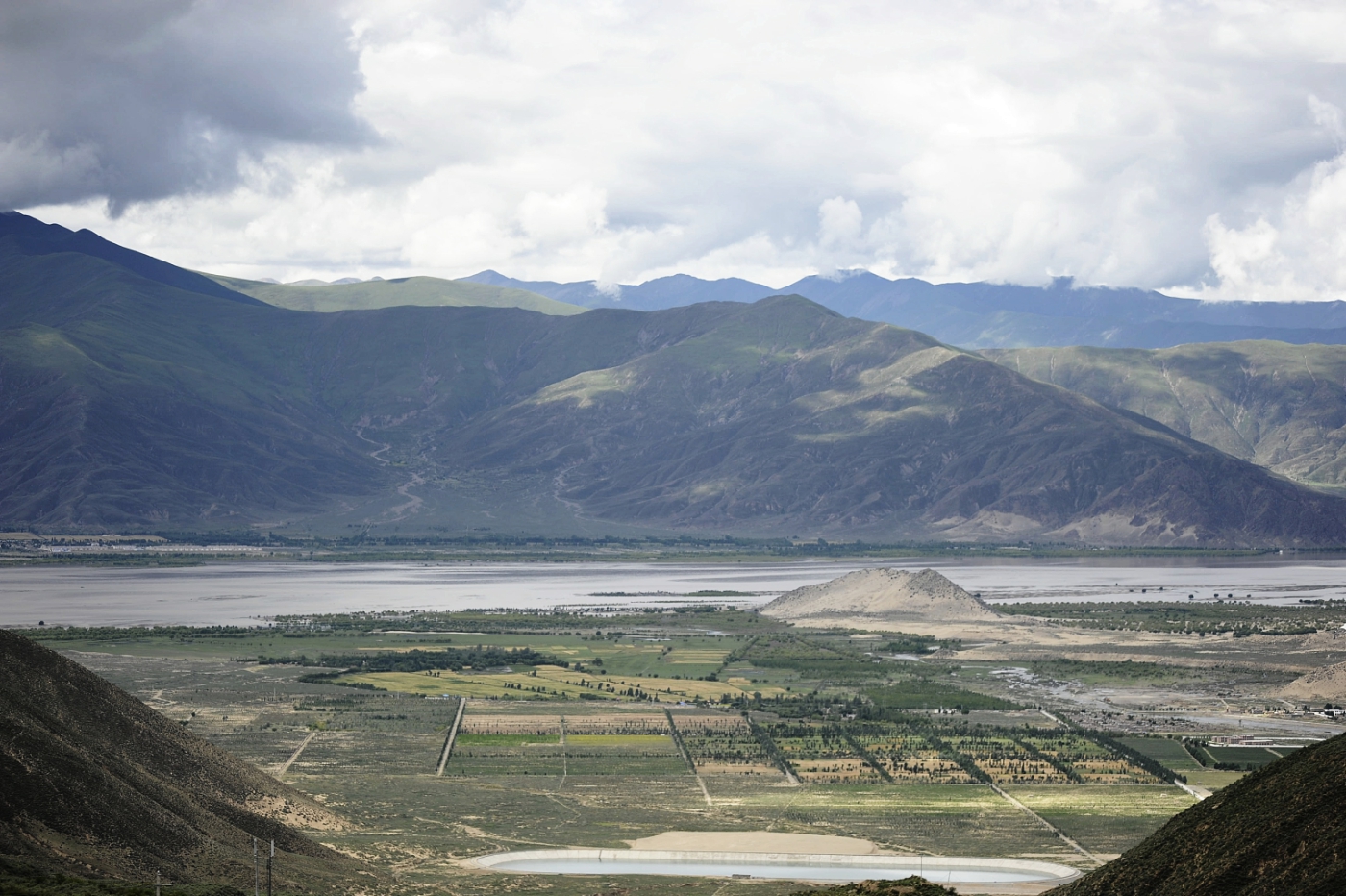
The prayer flags are blown up and down by the wind, and every time they move they are chanting sutras. This is why Tibetans stick the prayer flags at the windiest pass on the mountain.
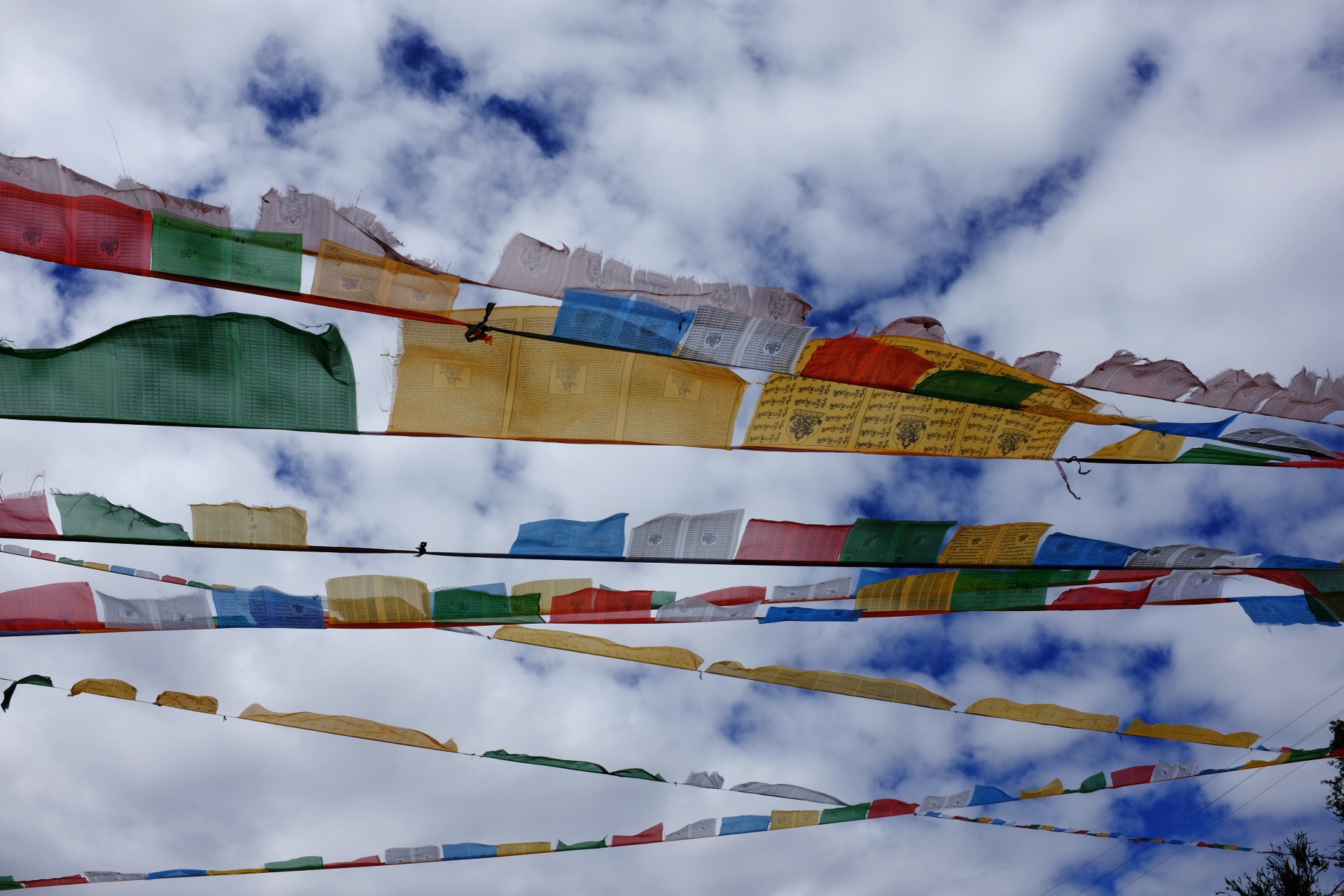
Even goats have a fairy-like temperament.
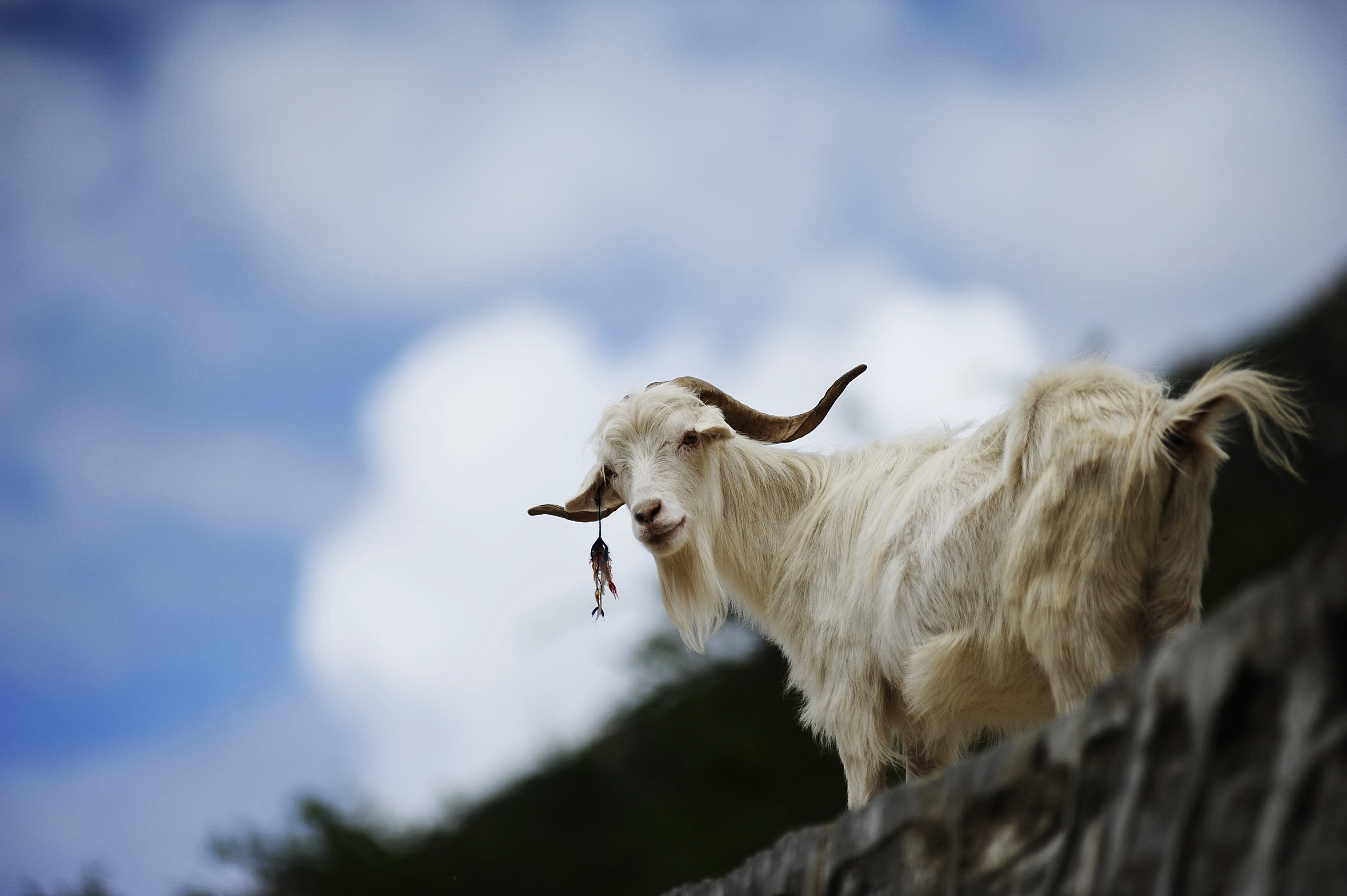
Juemu, who was carrying a teapot, was walking down the steps of the ashram gate, with a happy smile from the bottom of her heart on her face. Was it the Buddha in her heart that made her so happy?

Baidu says this: Among the believers who devoutly devote their lives to Tibetan Buddhism, there are not only those strong men, but also some pure and gentle women. They are called Juem. They stayed away from the world, studying scriptures, praying devoutly, abiding by the precepts in a closed nunnery (nunnery), and trying hard to knock on the door of their ideal "transcendent world" with a holy heart...
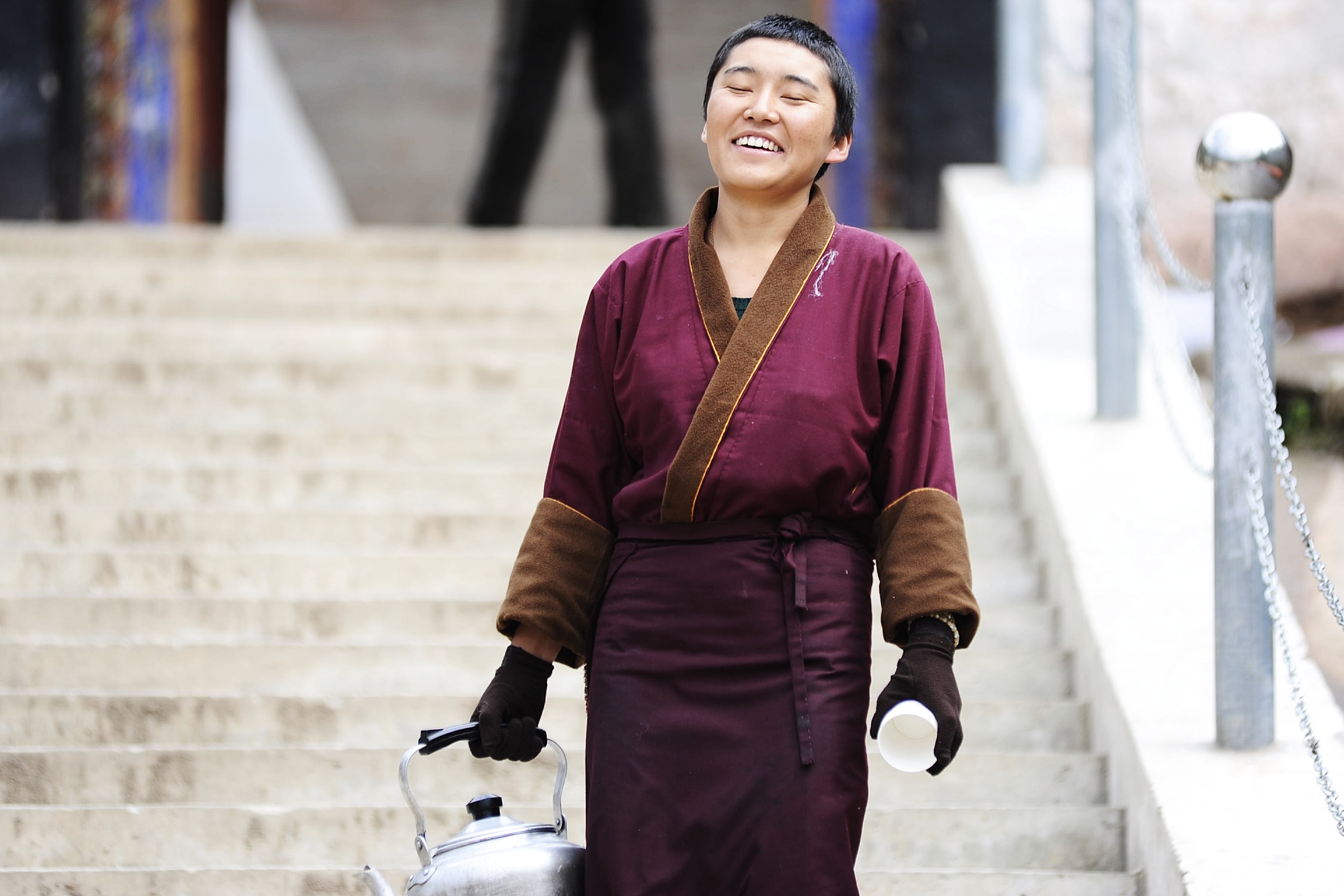
When I looked up, the pigeons on the window sill of the main hall were staring at me.

A group of Juemu who had finished their homework walked along the prayer path.
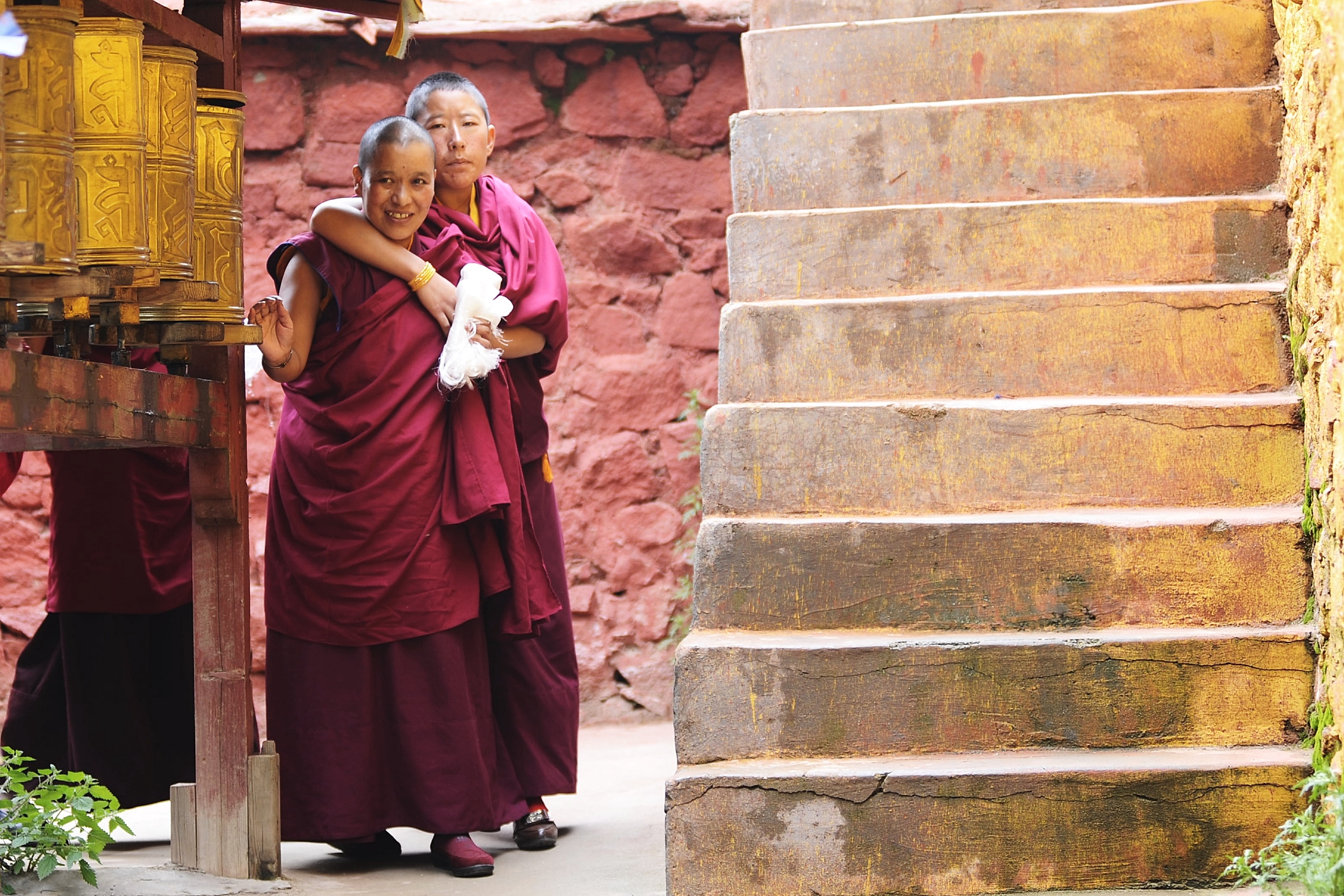
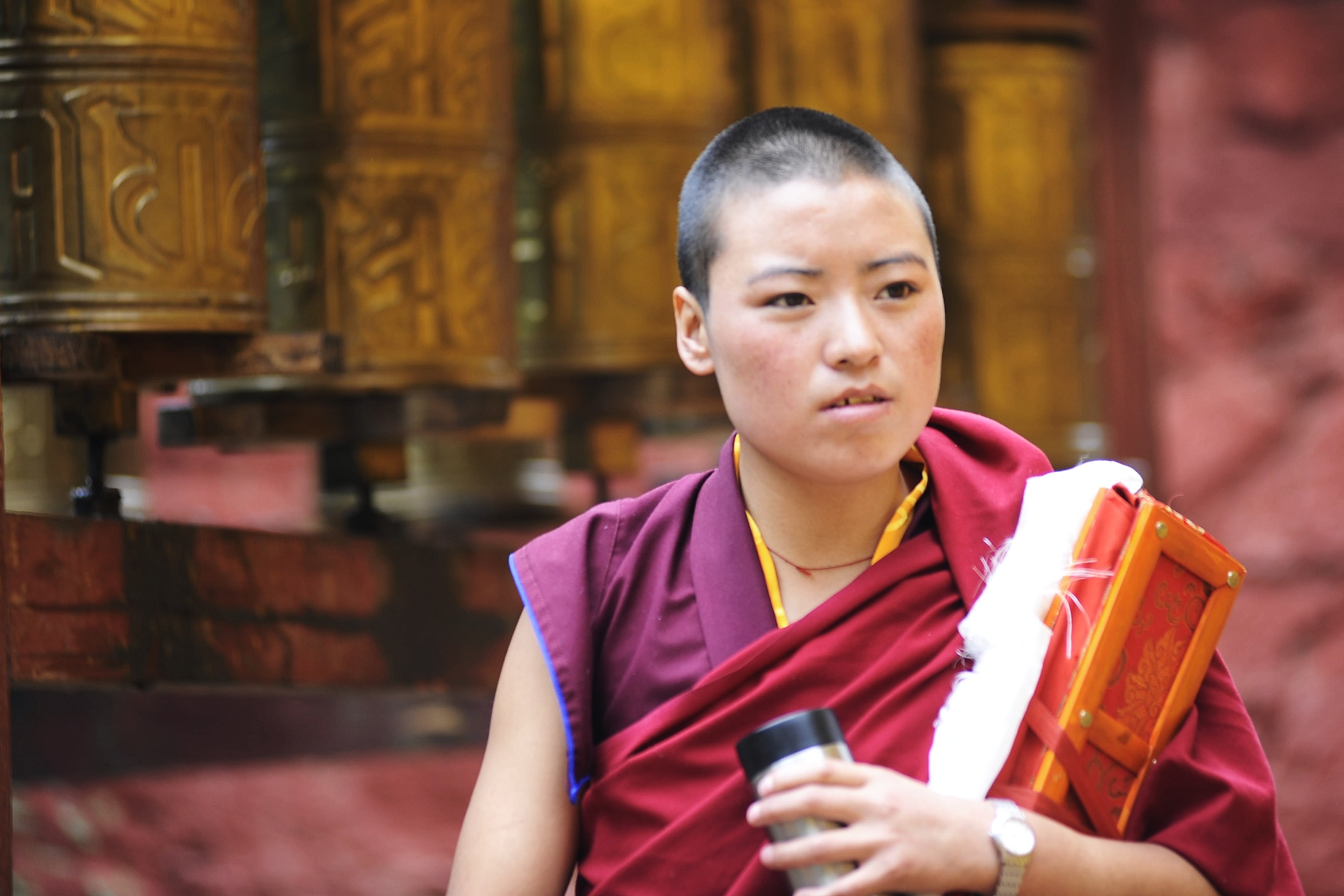
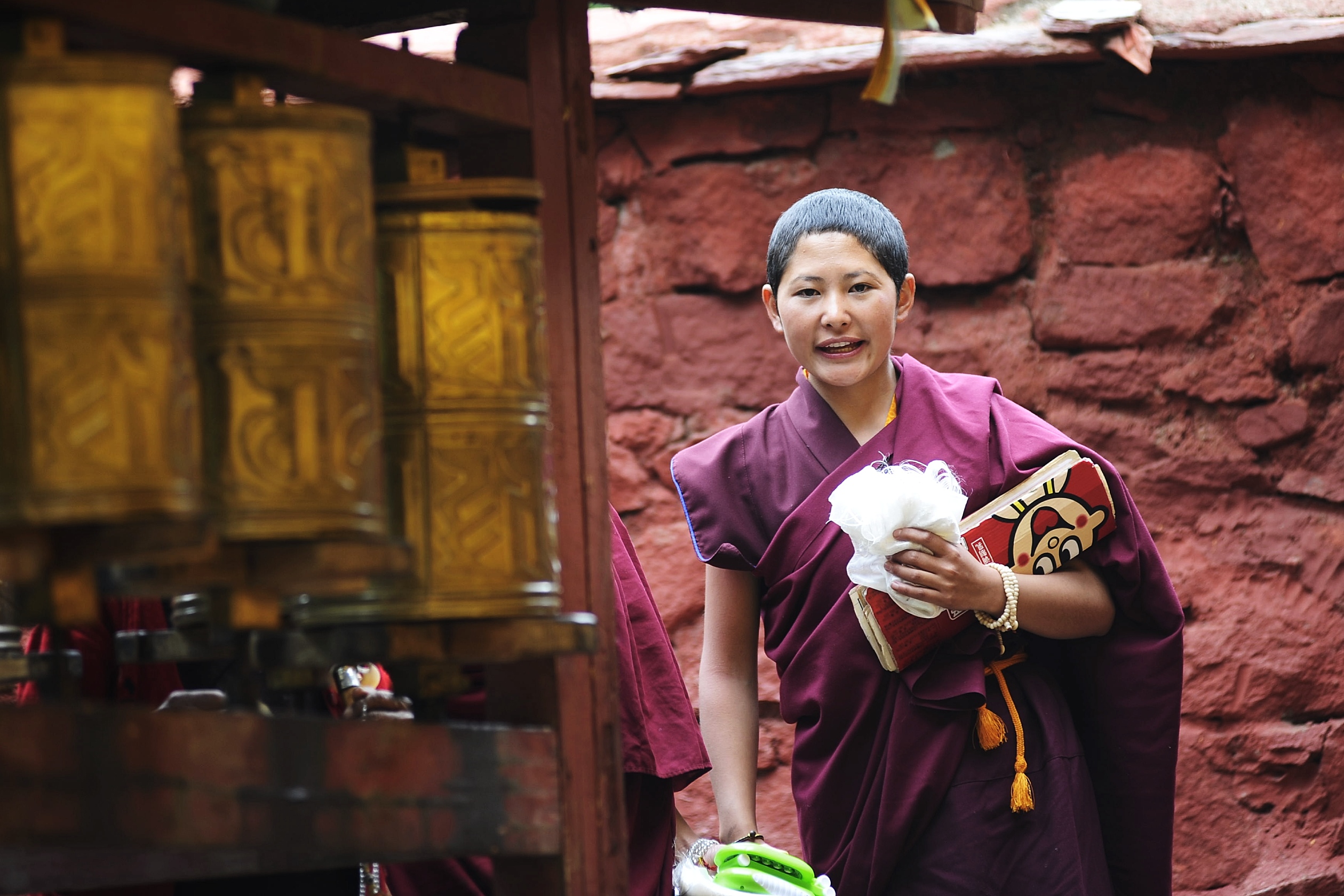
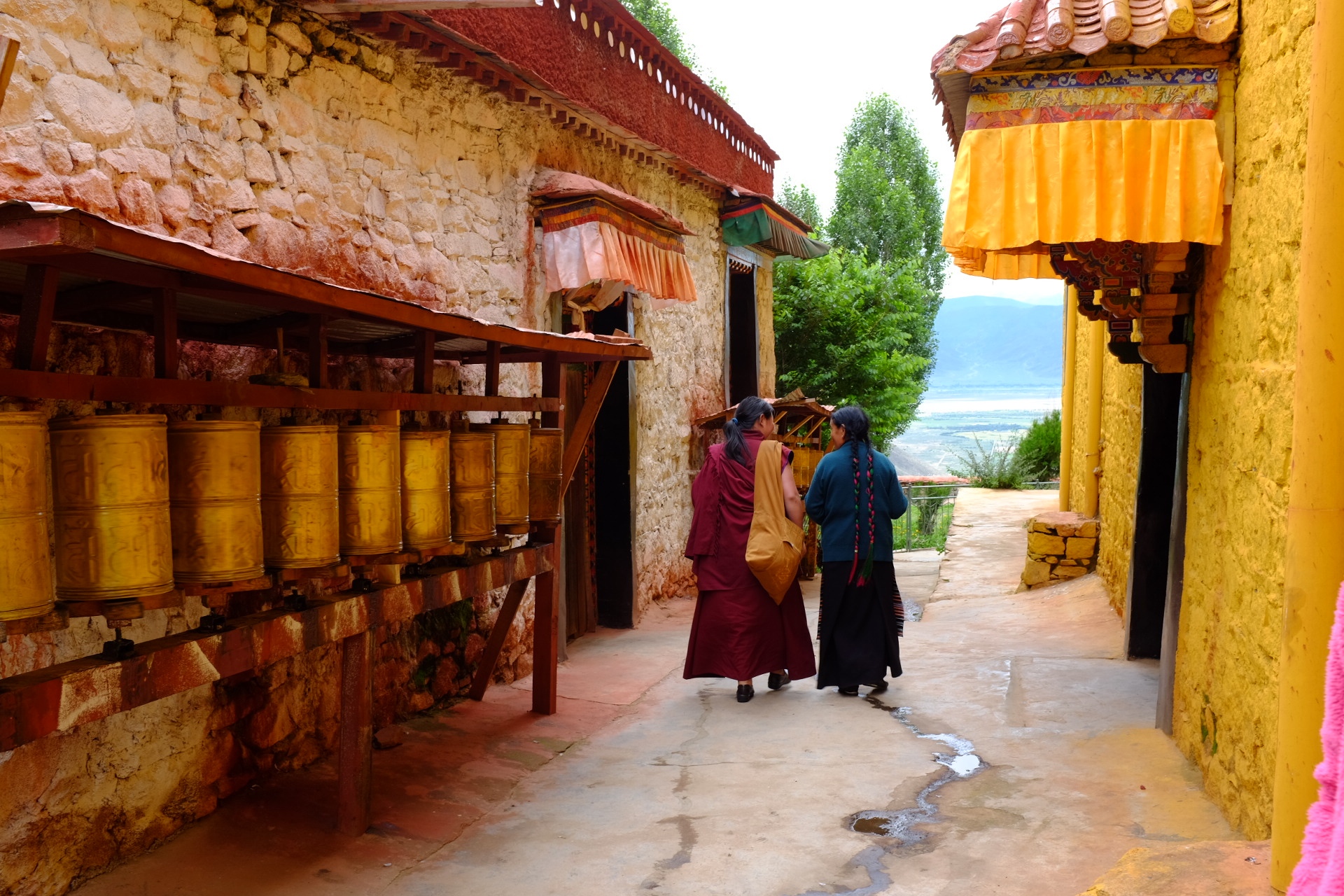
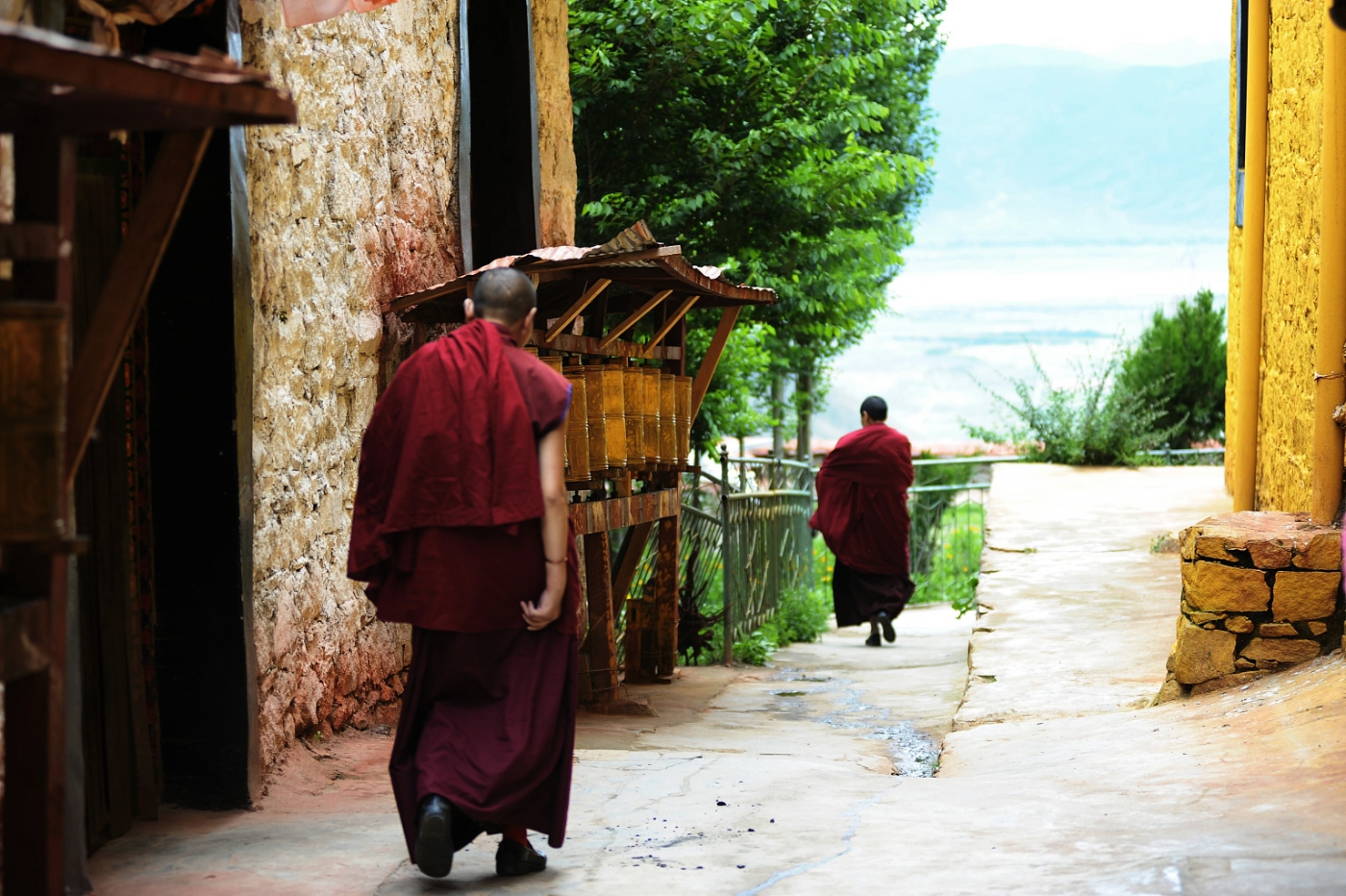
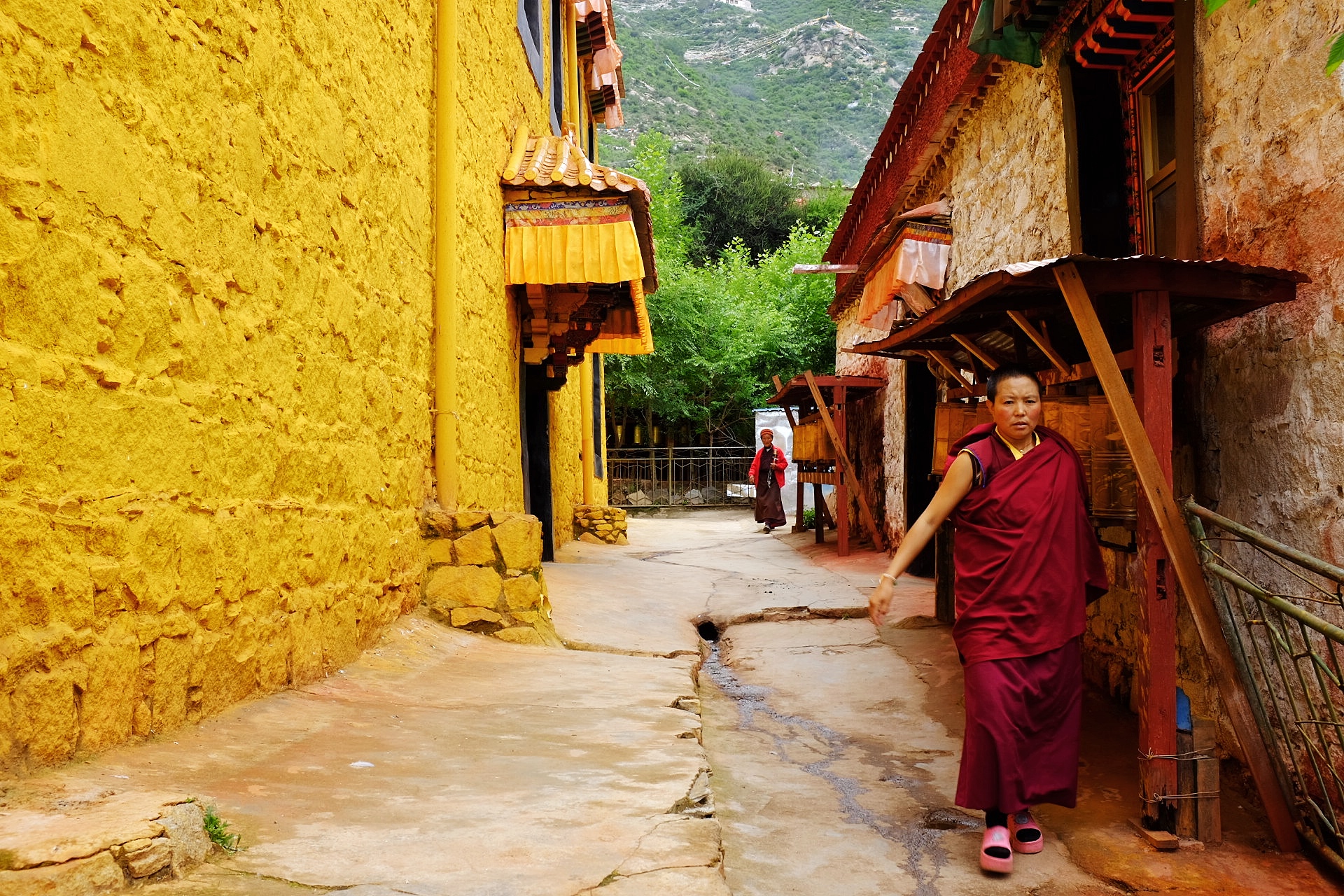
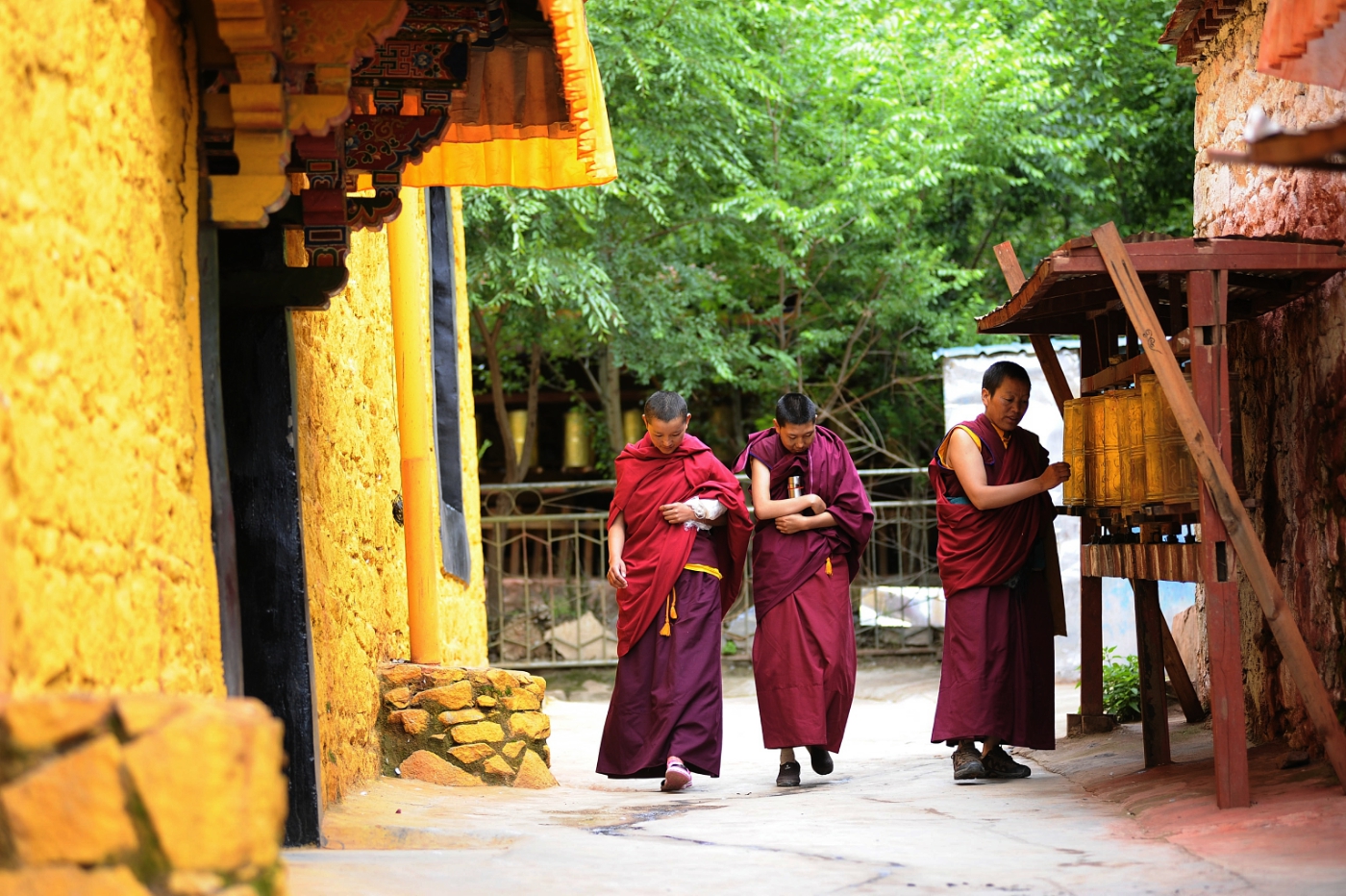

The daughter looked at these juemu in great surprise. In her opinion, the monks should all be men. The smell of fried potato chips from Qingpu Ashram woke my daughter up from her surprise. "Let's have lunch here," the daughter said happily.
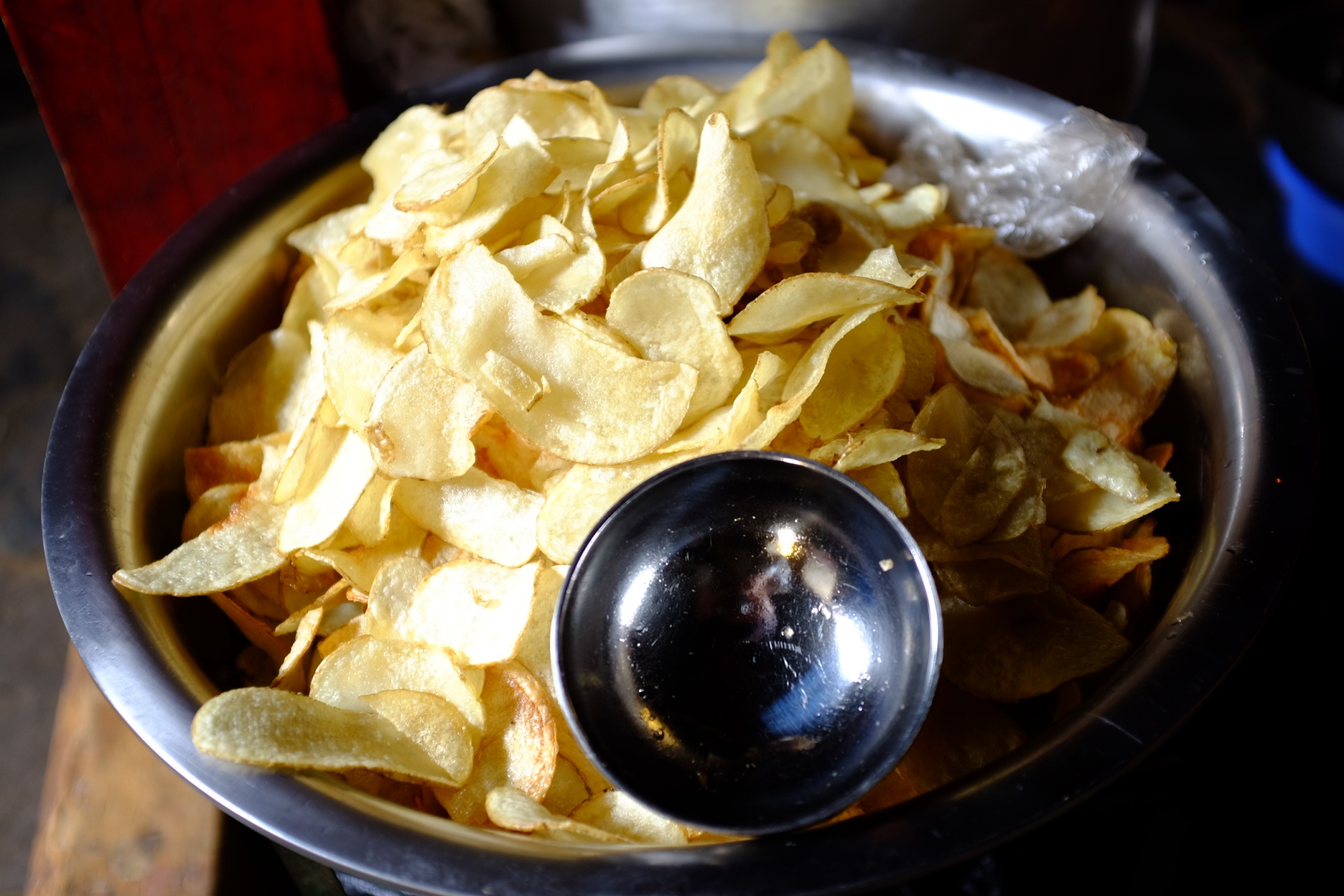
One bowl of Tibetan noodles per person. To be honest, the taste is not very good, but how many opportunities will there be in this life to eat a bowl of Tibetan noodles made by Juem here.
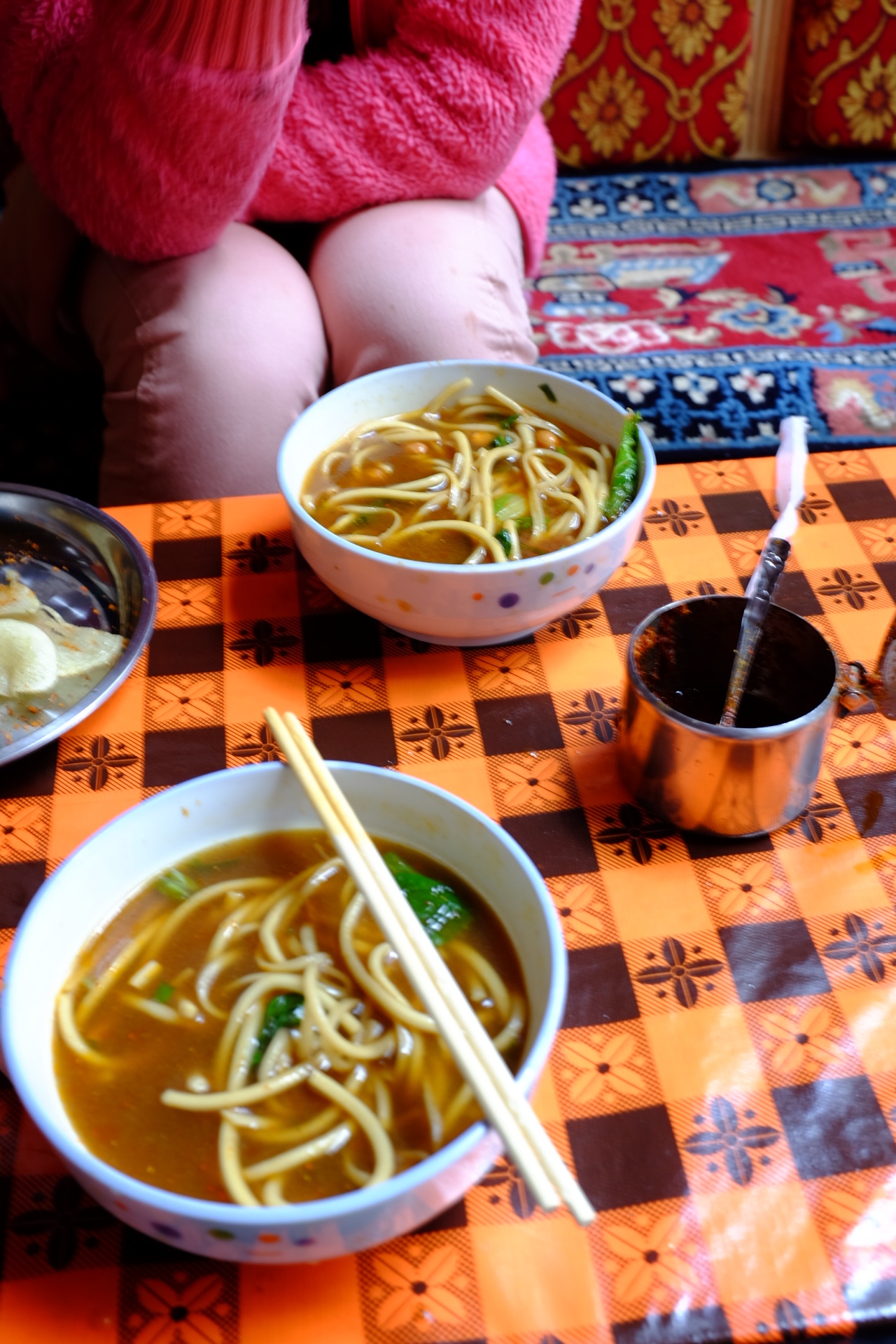
After eating Tibetan noodles and basking in the sun on the roof of the main hall, a Juemu was giving his companion a haircut and was very dissatisfied with my taking pictures! Sorry, I only took one picture. The look on her face made me travel back in time to high school. She looked so much like a classmate of mine!
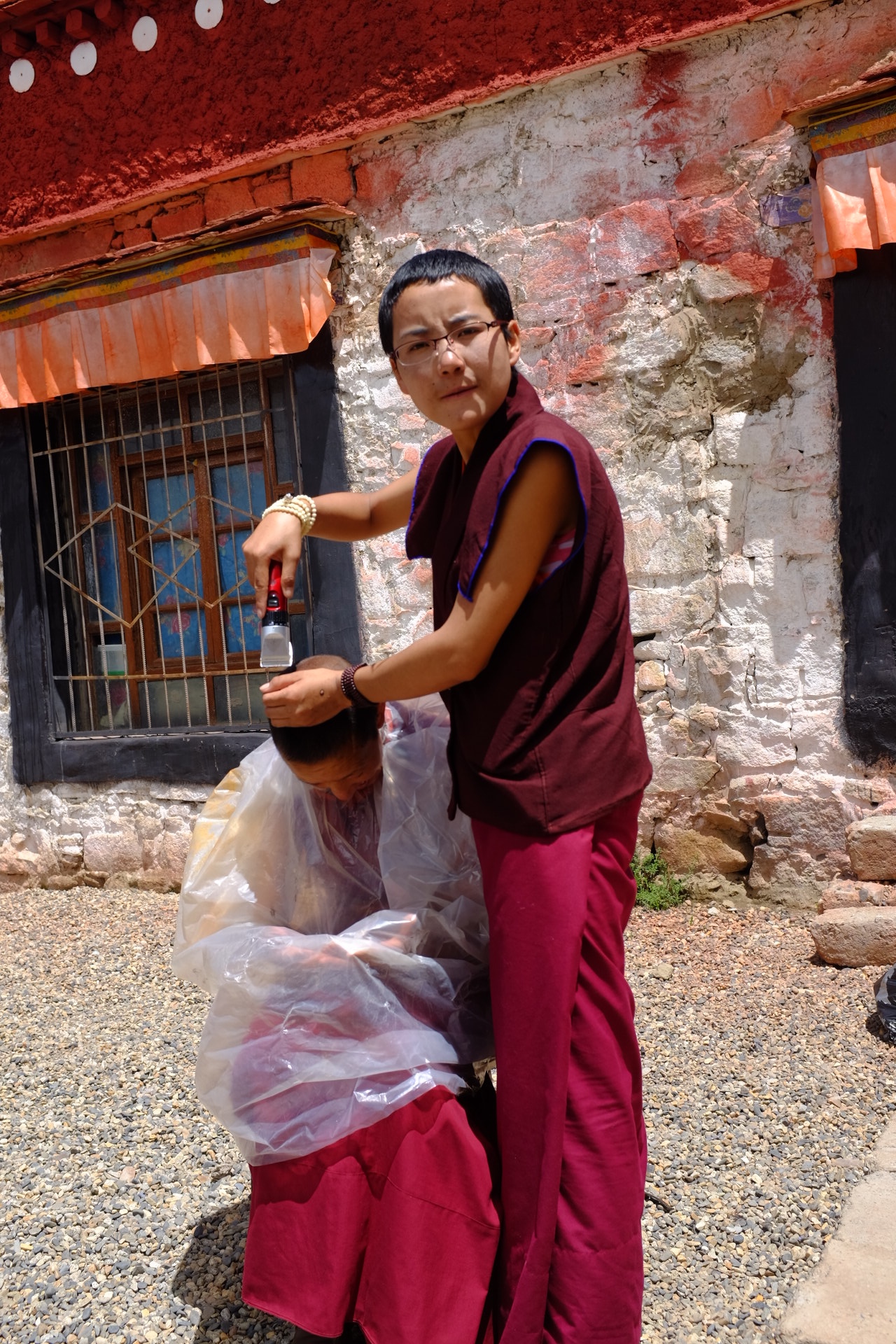
After leaving Qingpu ashram, we ended our trip in Shannan. In fact, there is another Lamu Lacuo in Shannan that is very worth visiting. Lamu Lacuo's status in Tibetan Buddhism far exceeds that of the three sacred lakes in Tibet. It is the reincarnation system of Tibetan Buddhism. It is an important part of confirming the reincarnation of Dalai Buddha. Legend has it that past lives can be seen by the lake. Due to time constraints and not knowing whether the car can go up, I can only leave one more thought.
Return to Zedang via the original route, cross the Yarlung Zangbo River Bridge again, and head towards Yamdrok Yumco.
